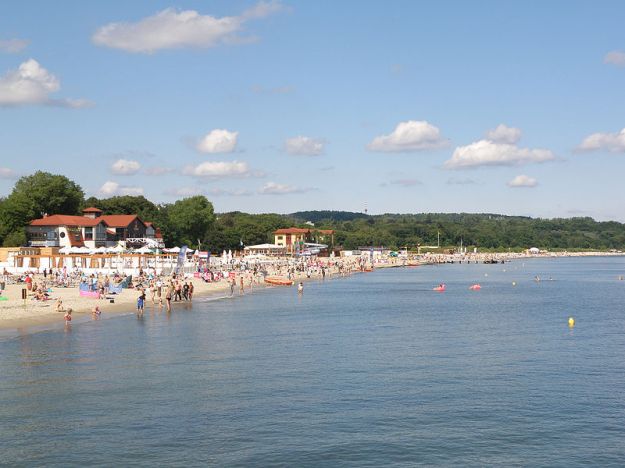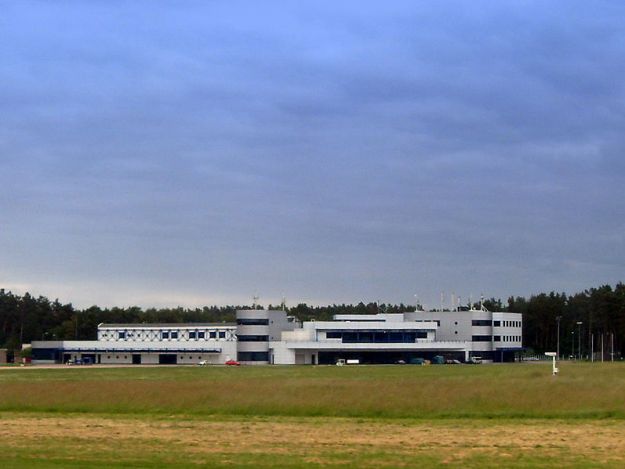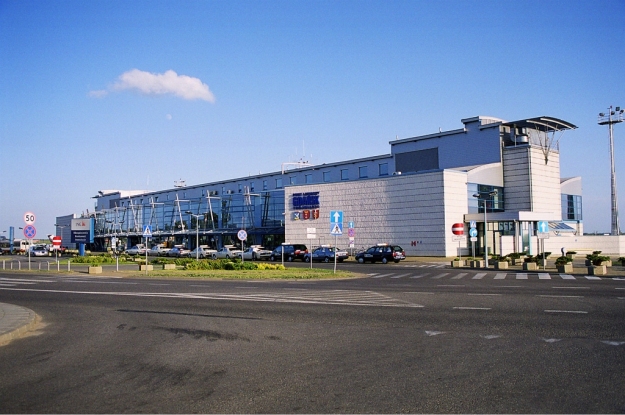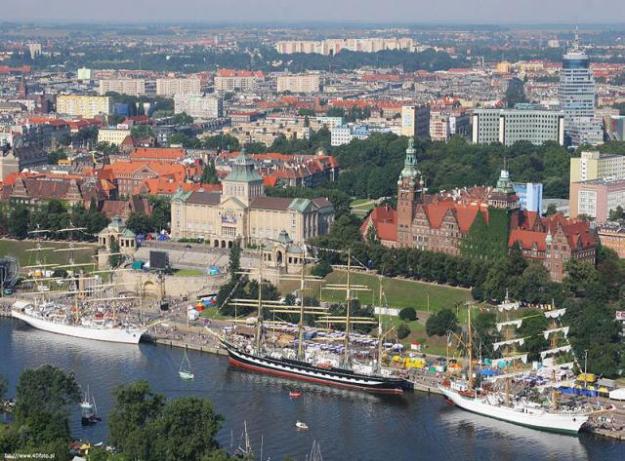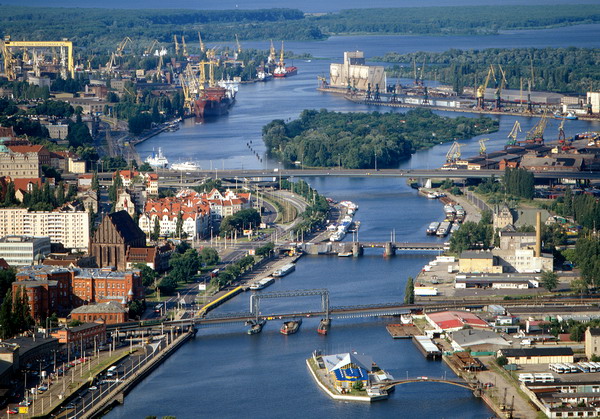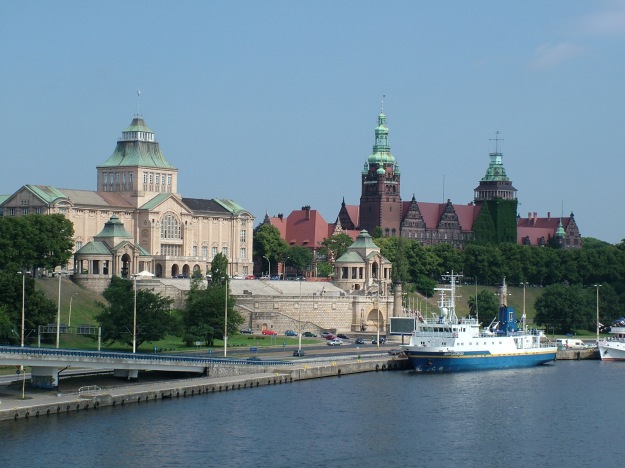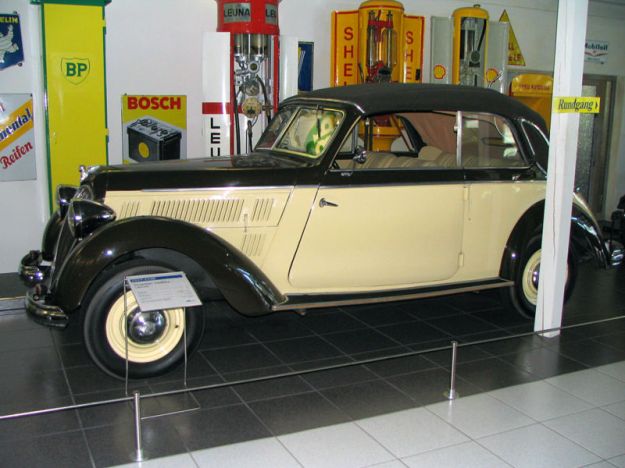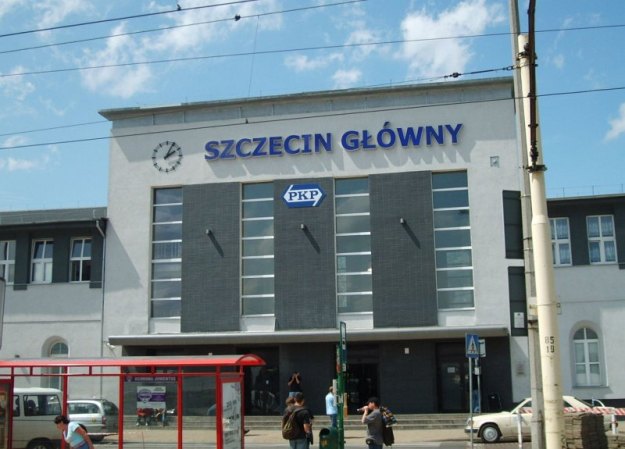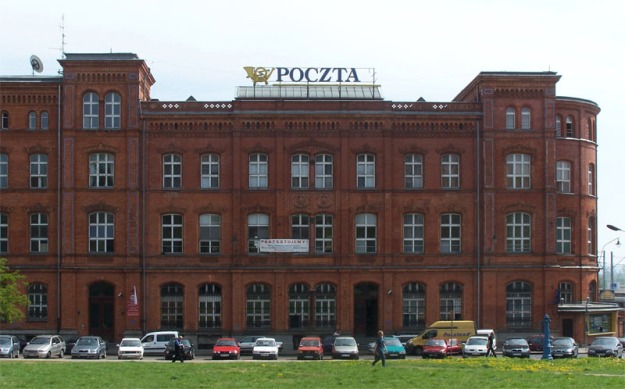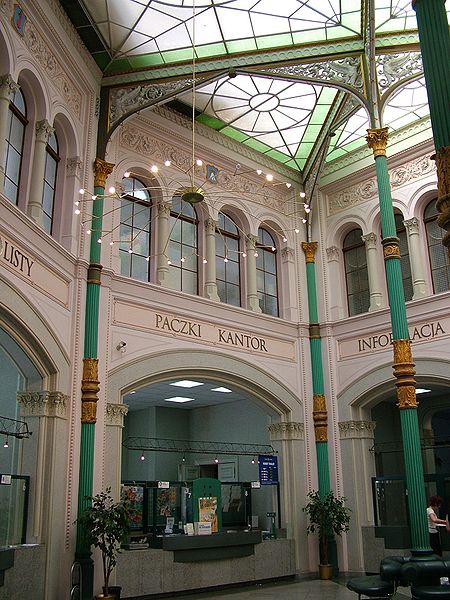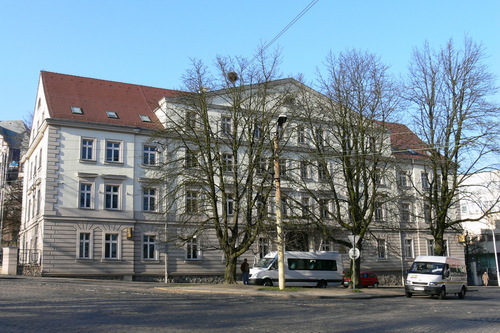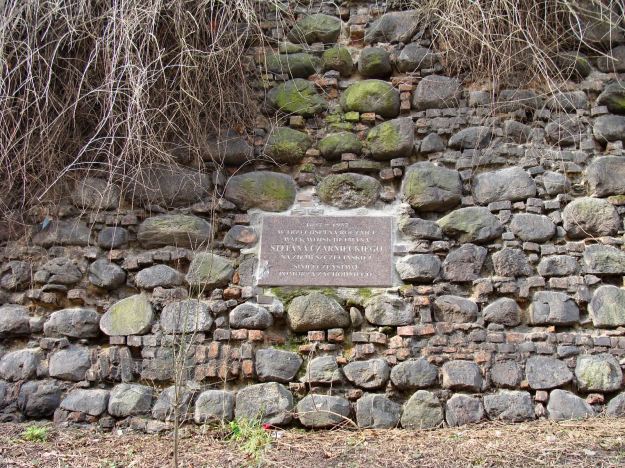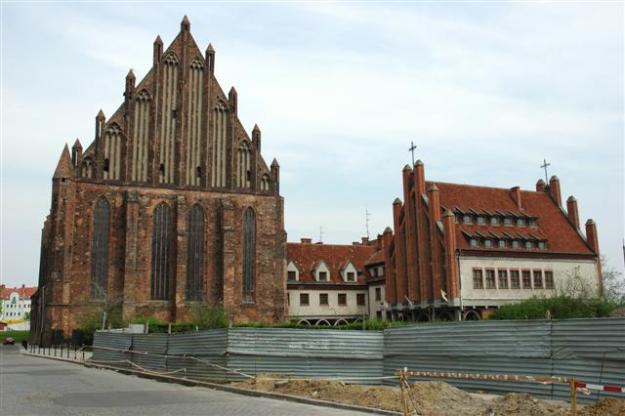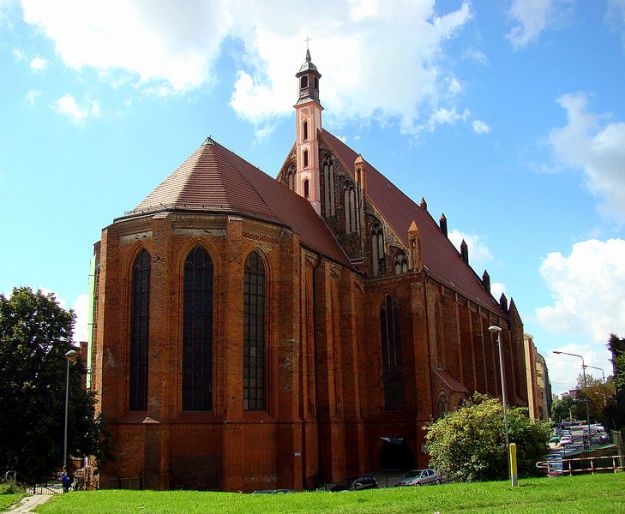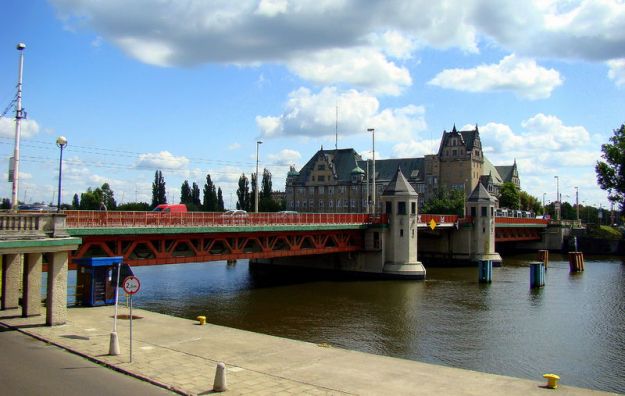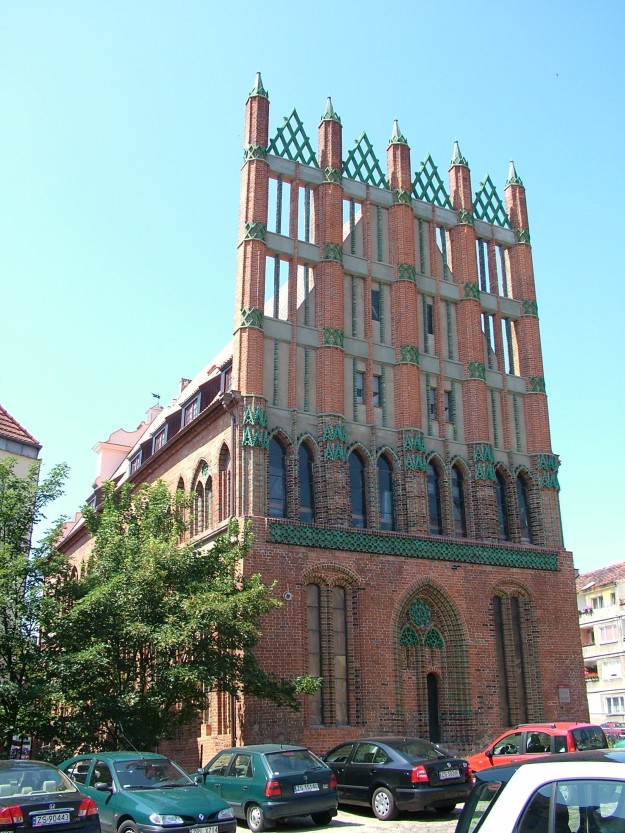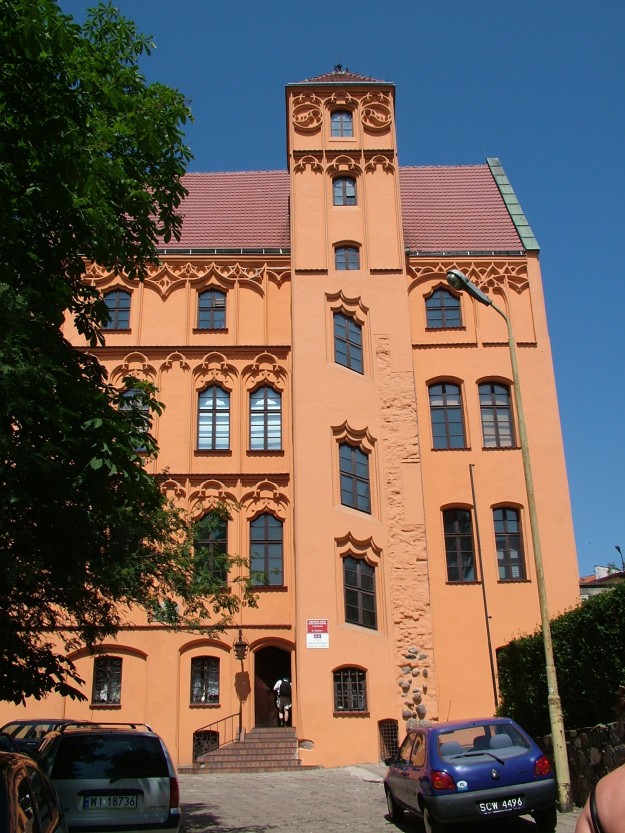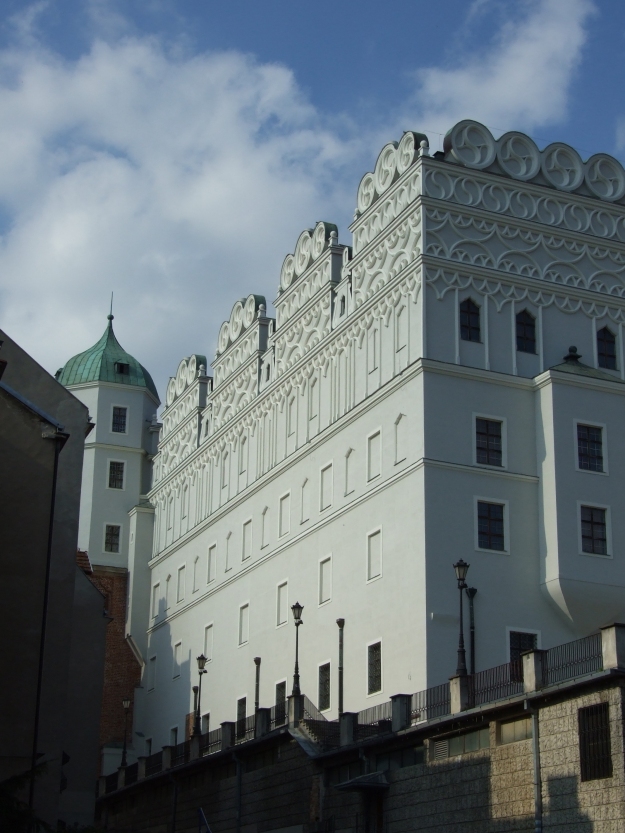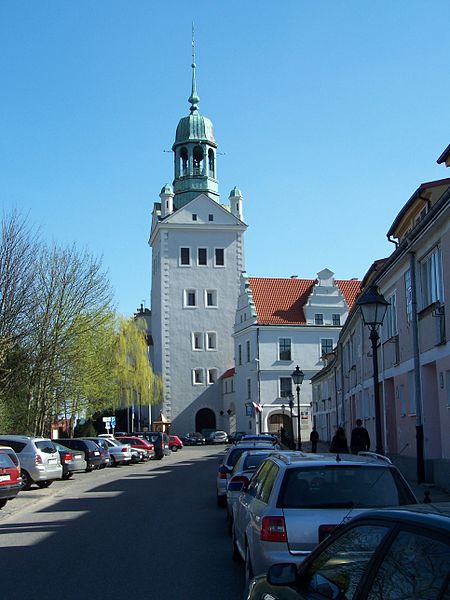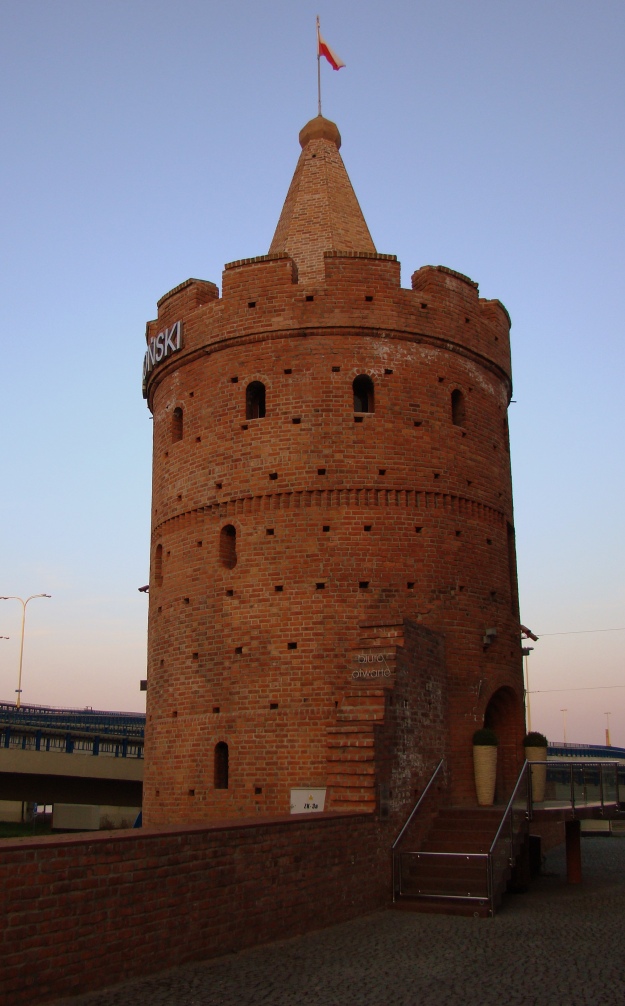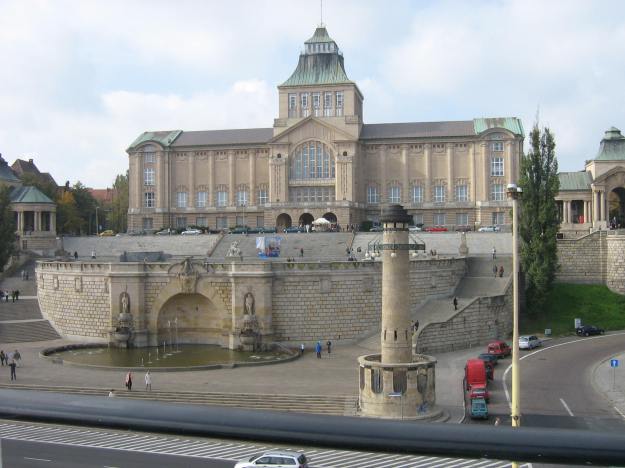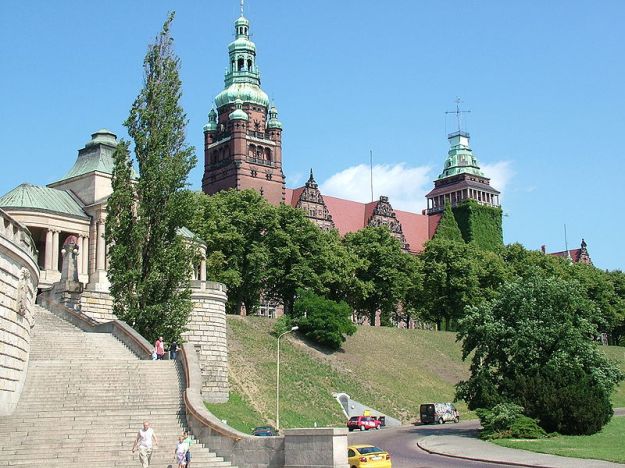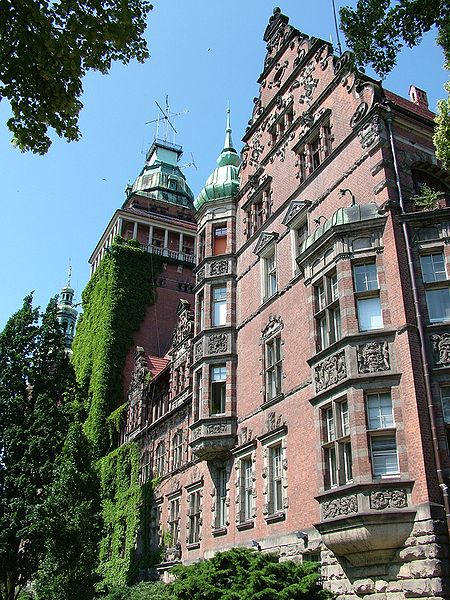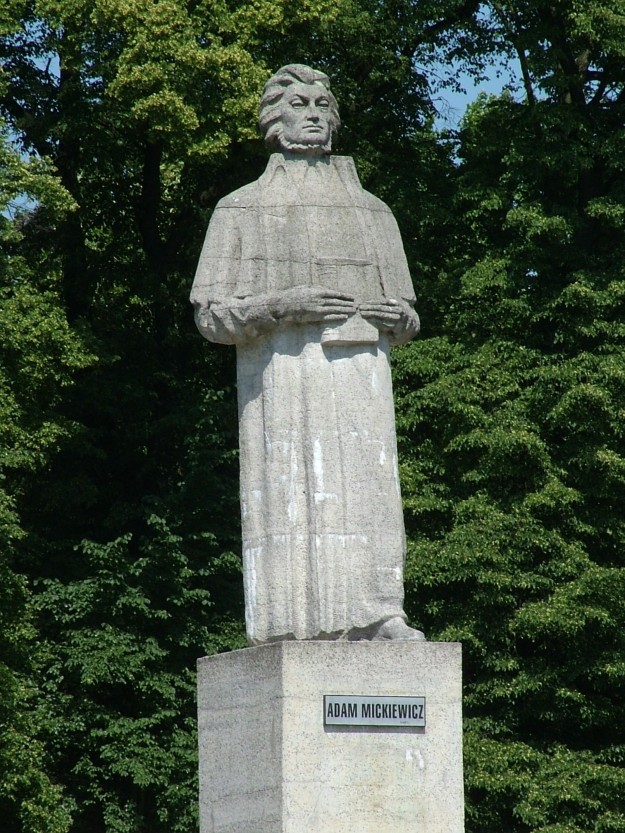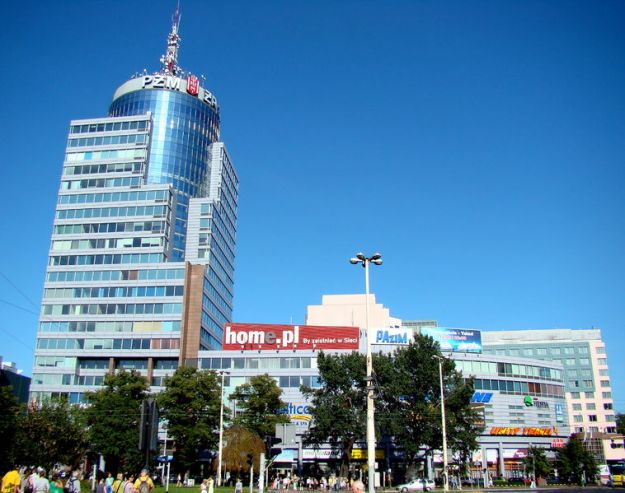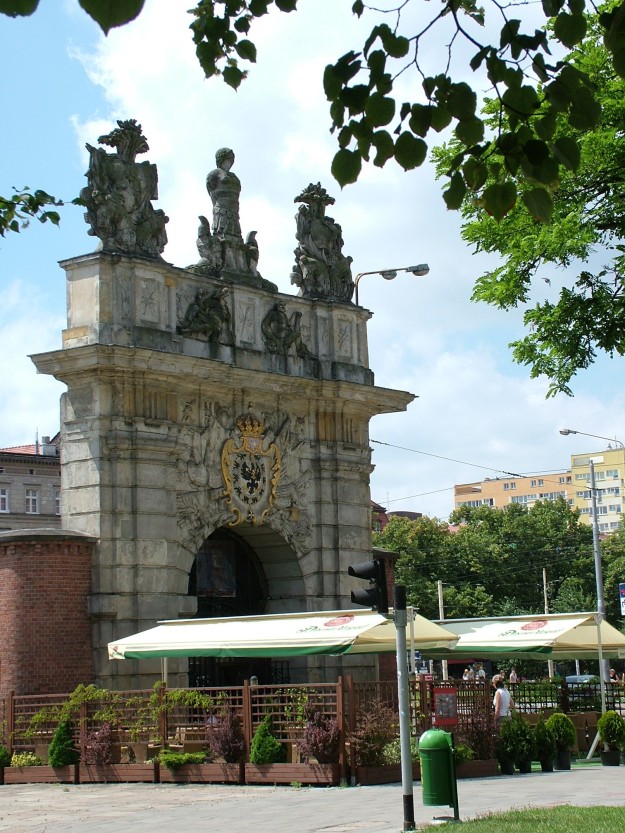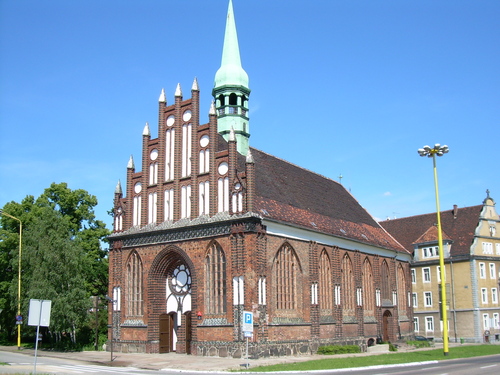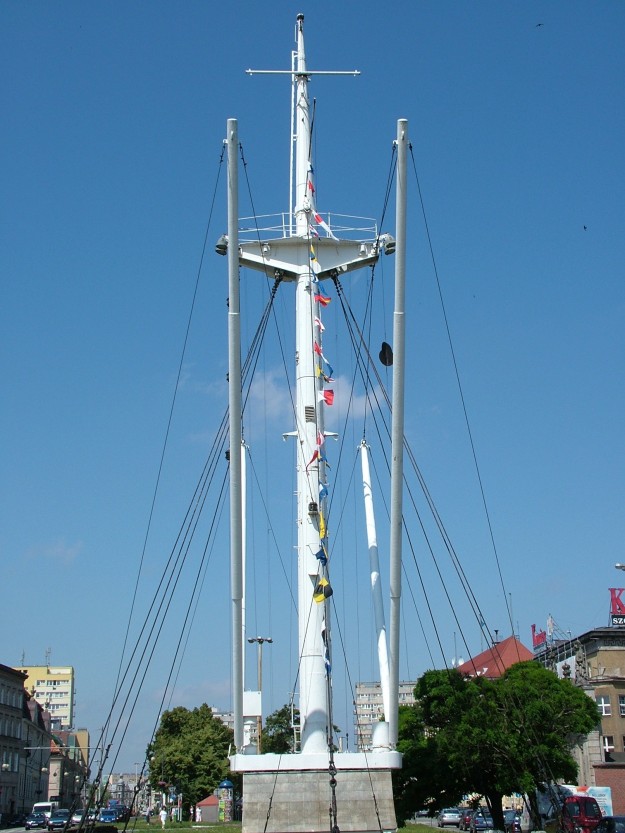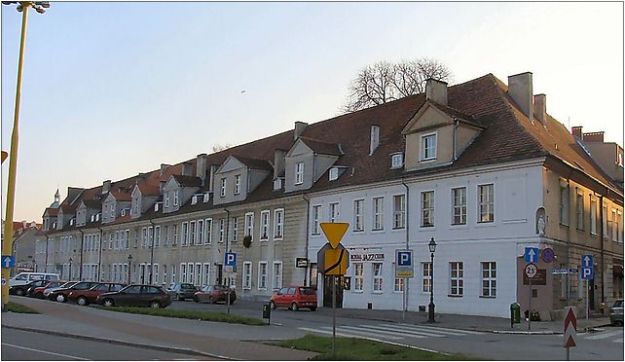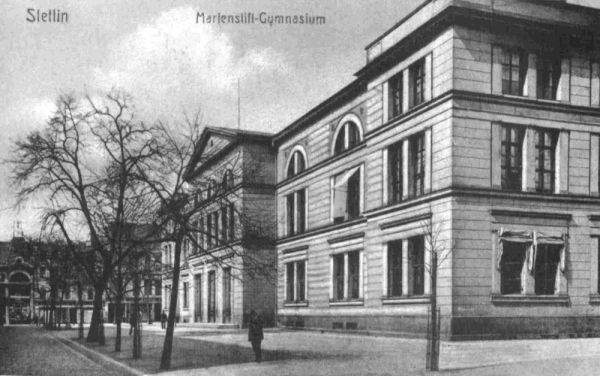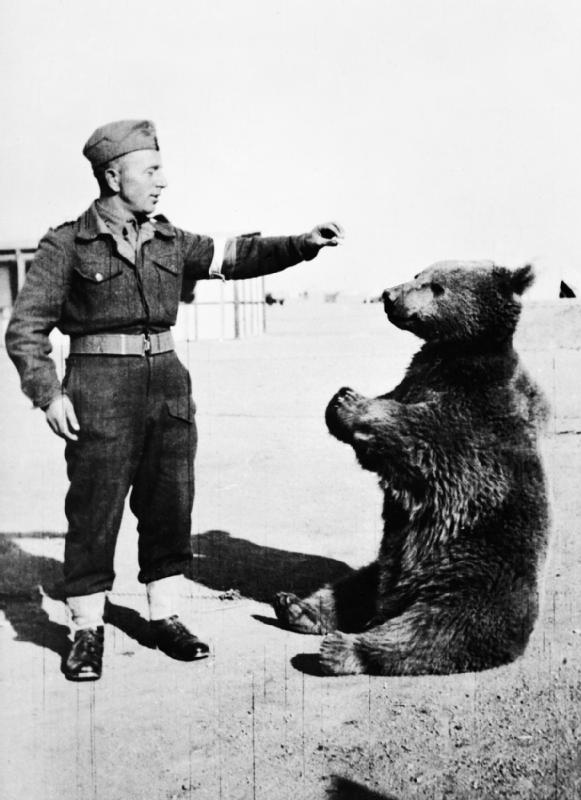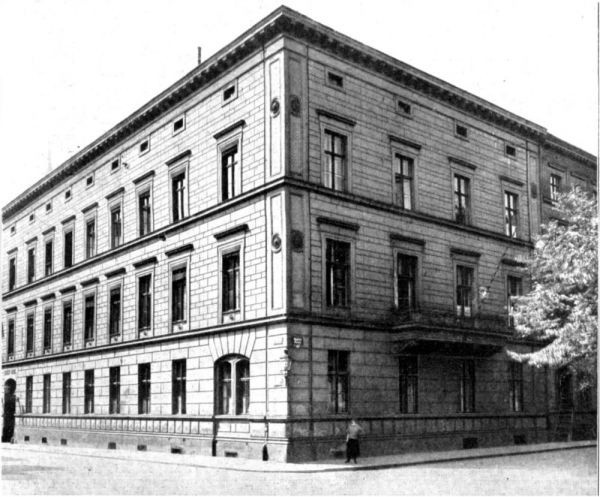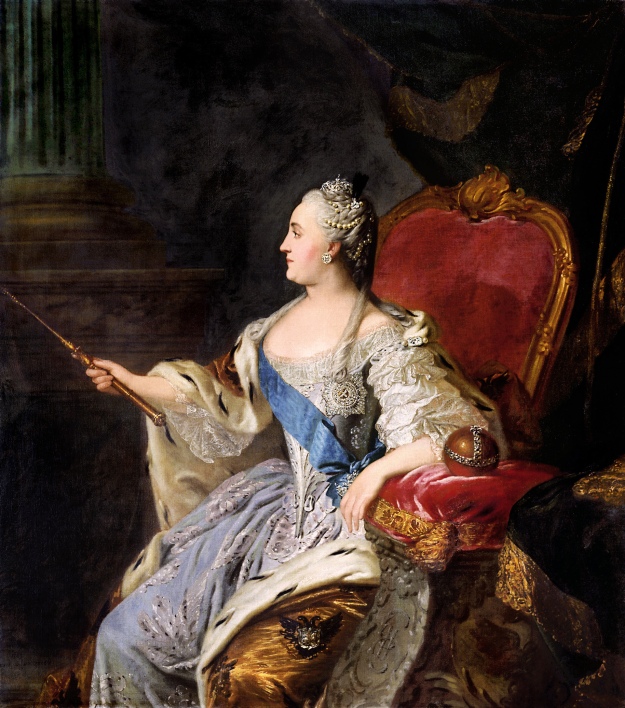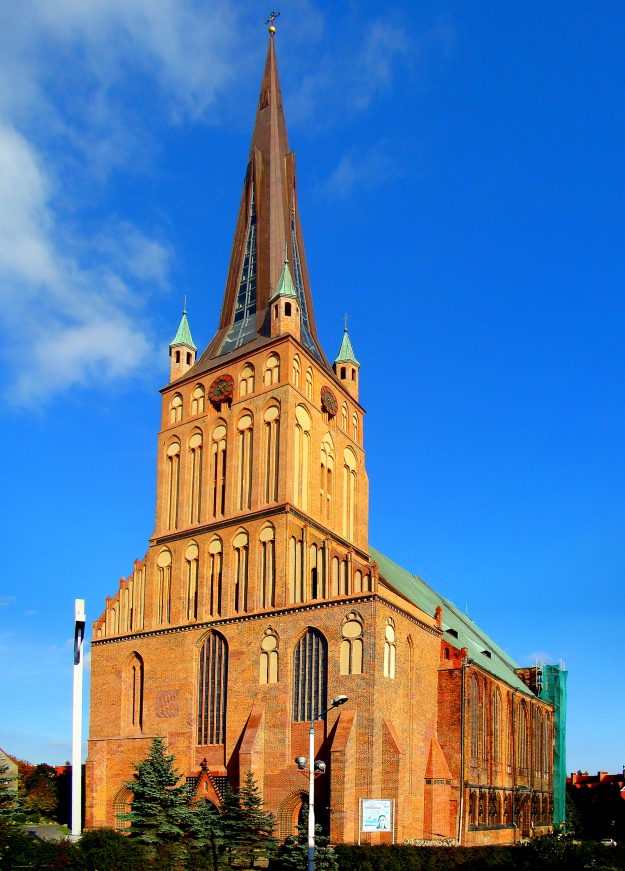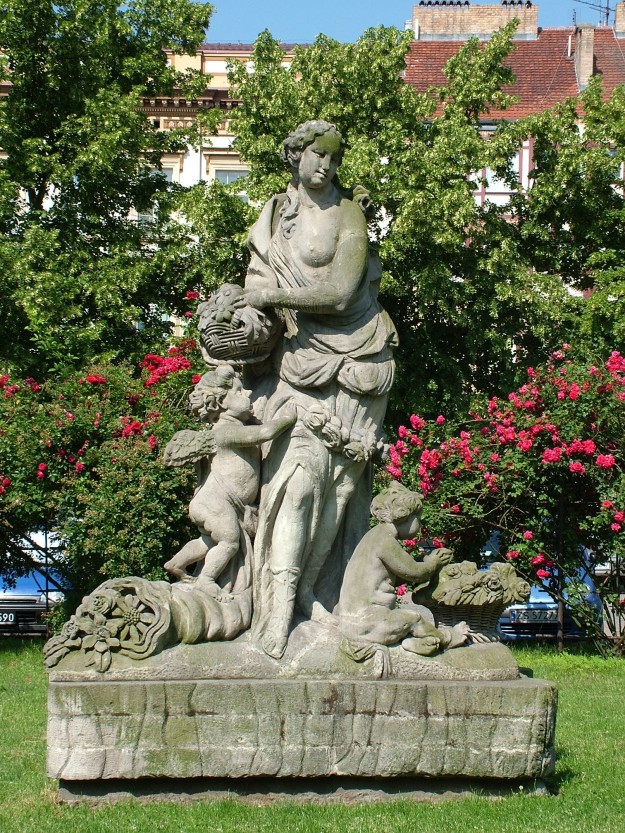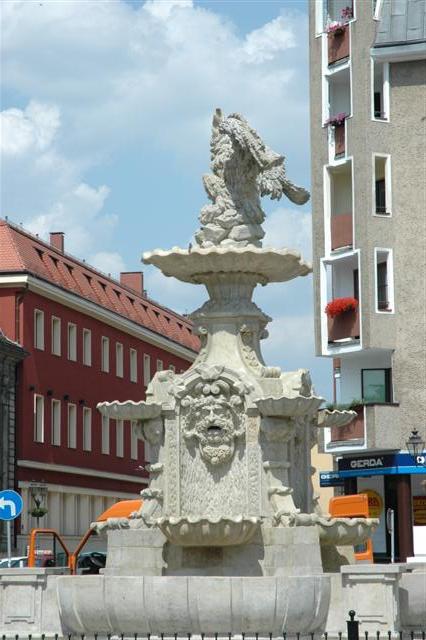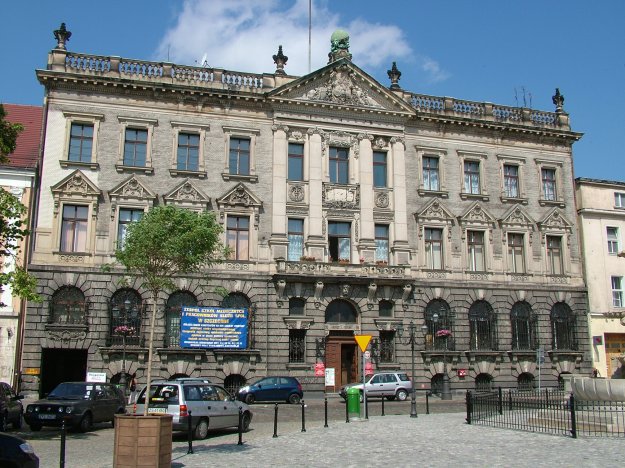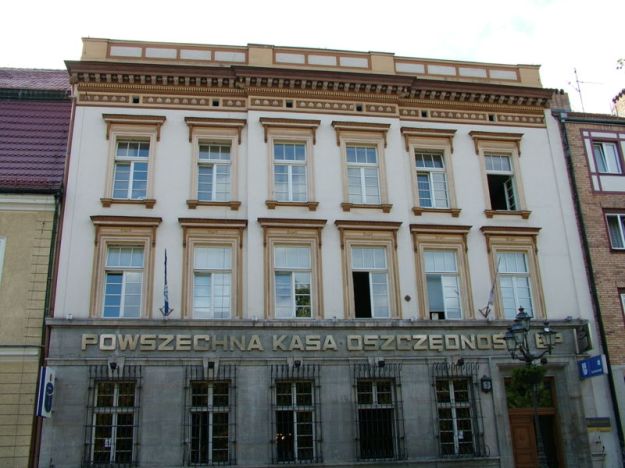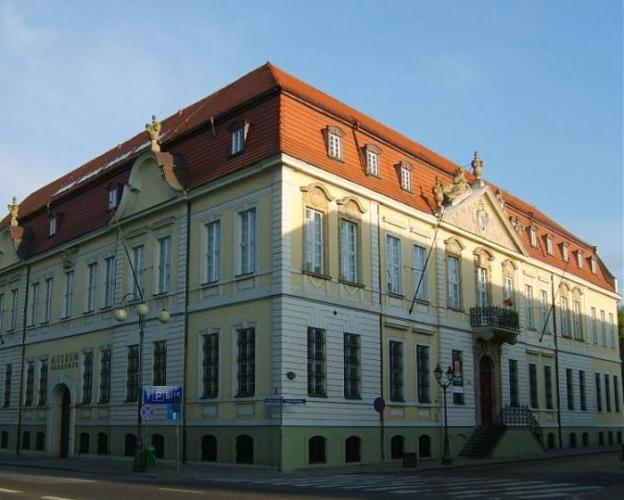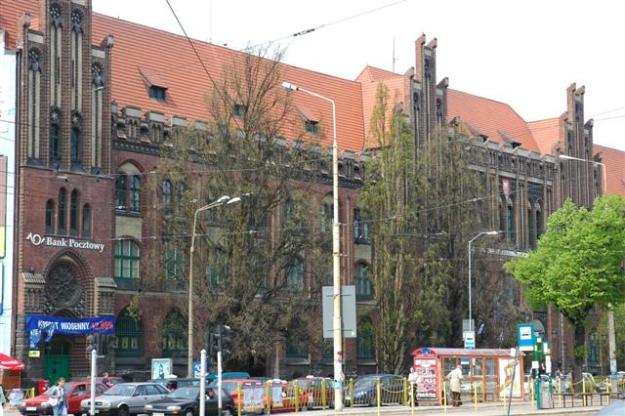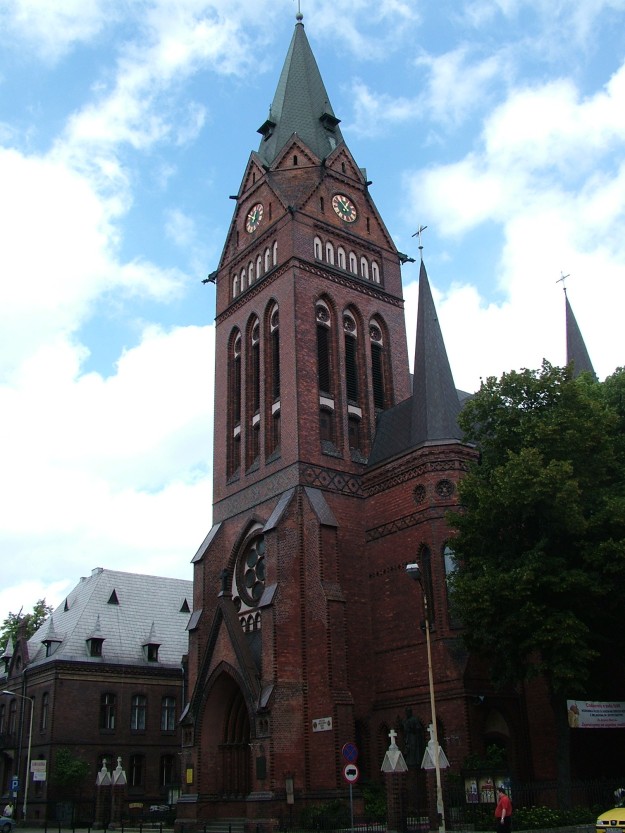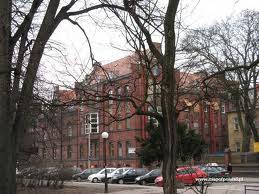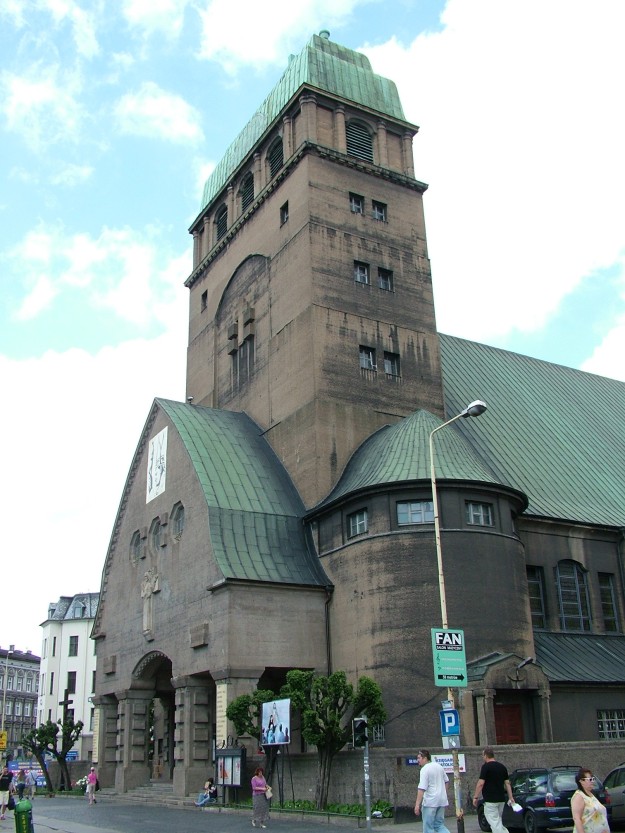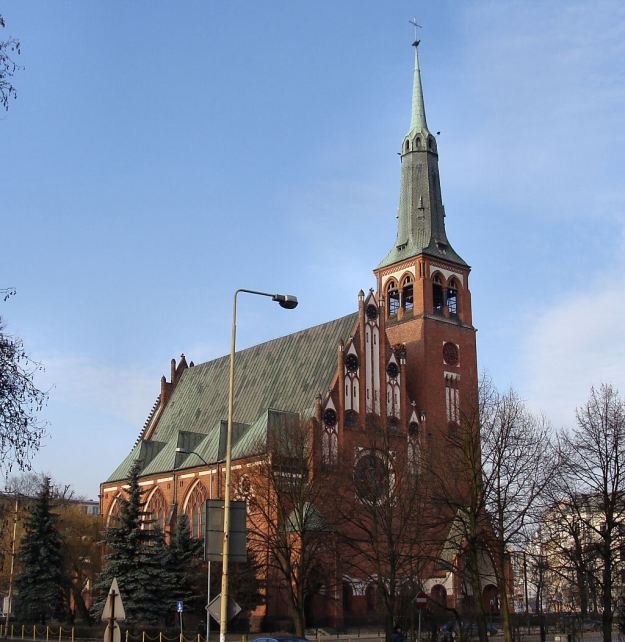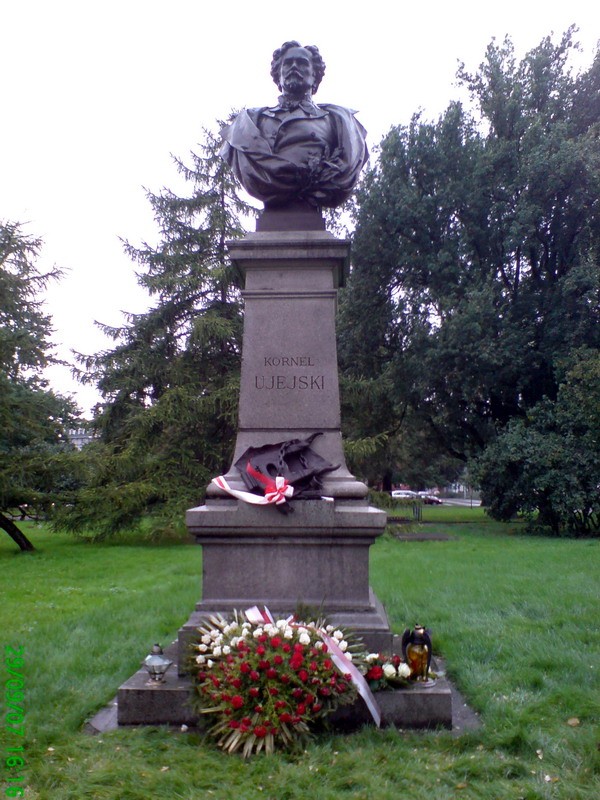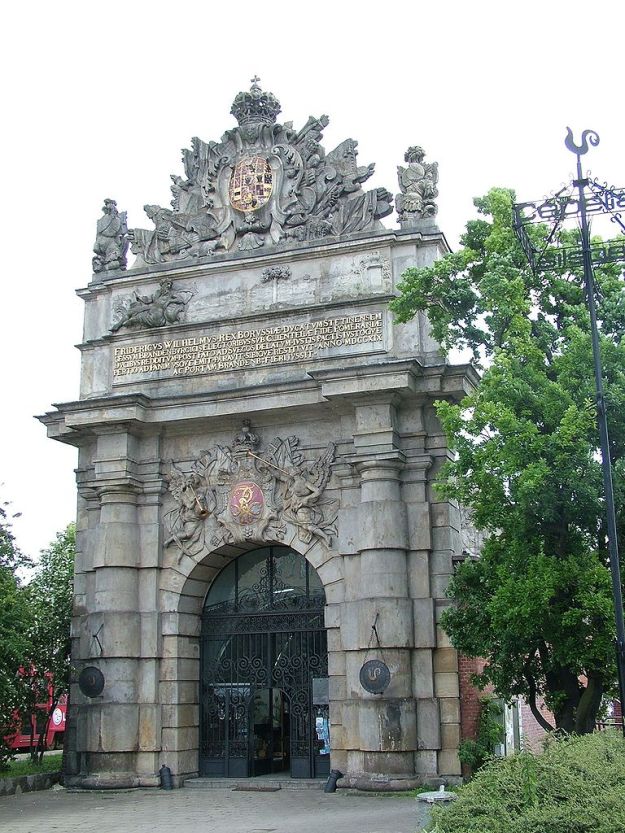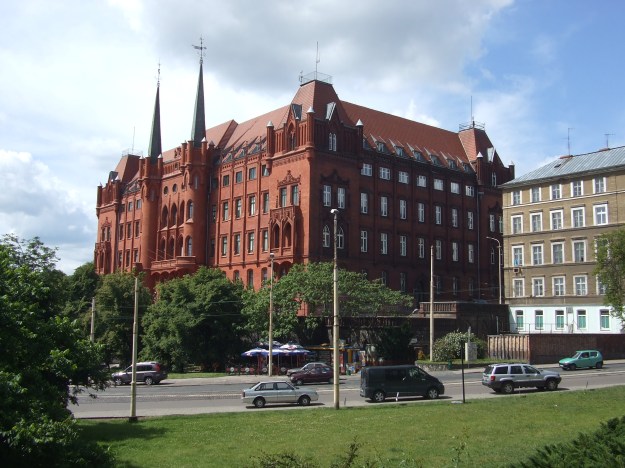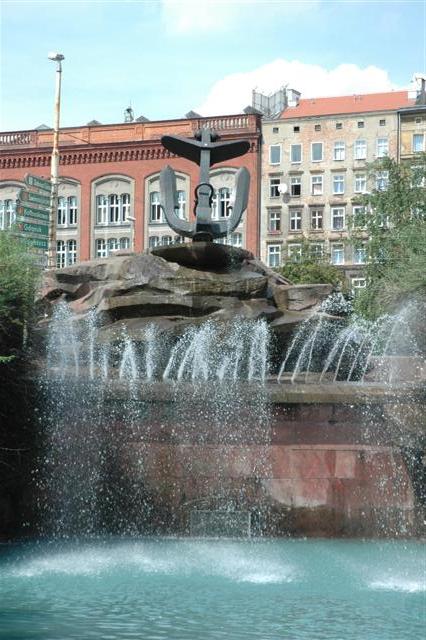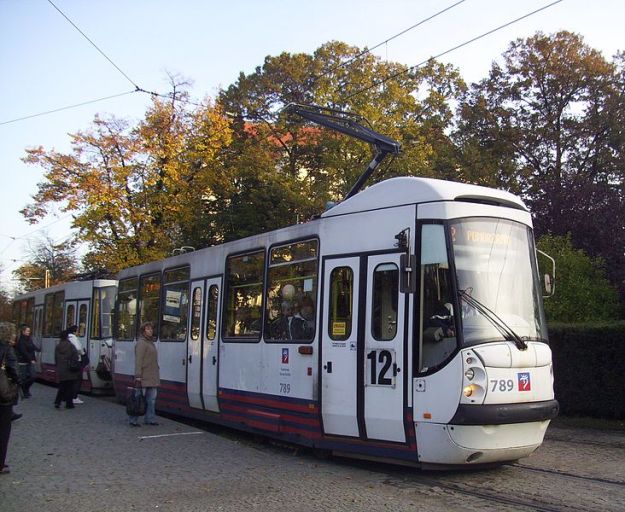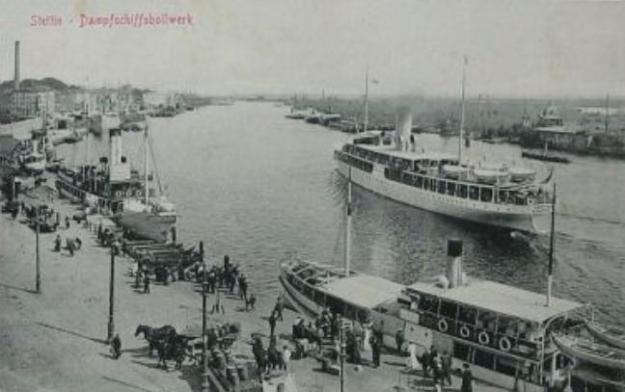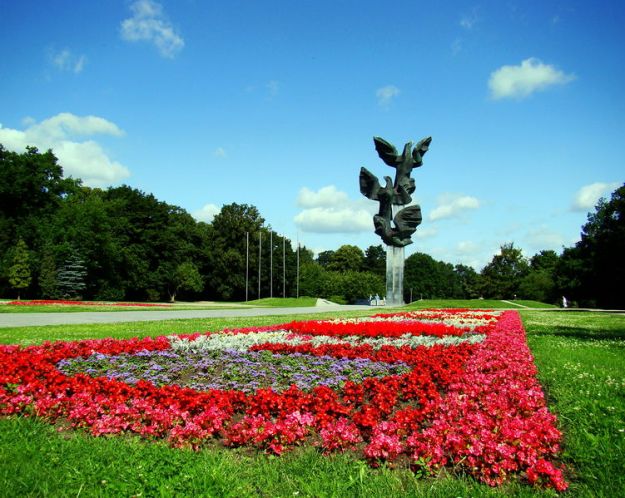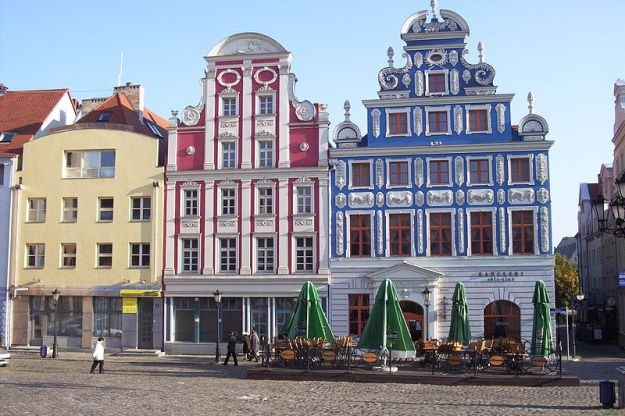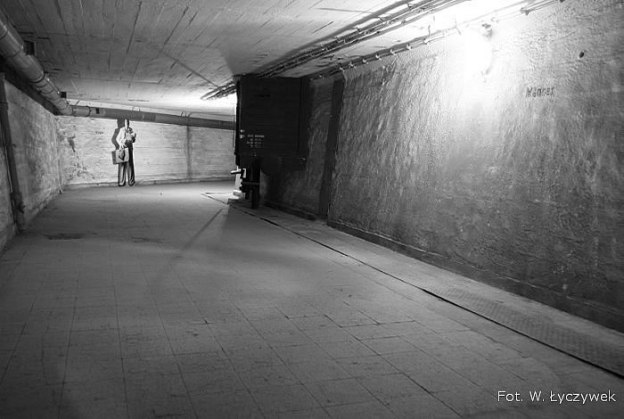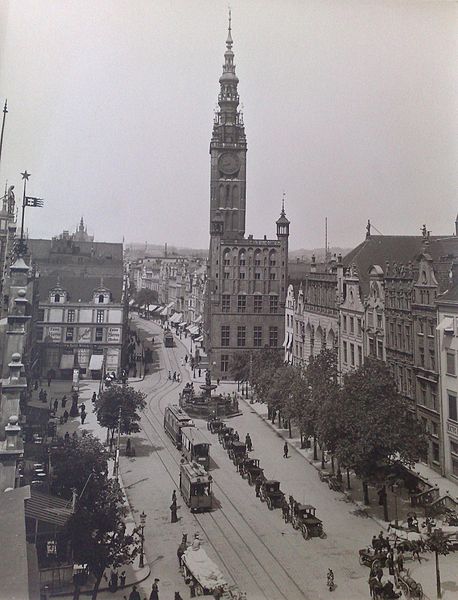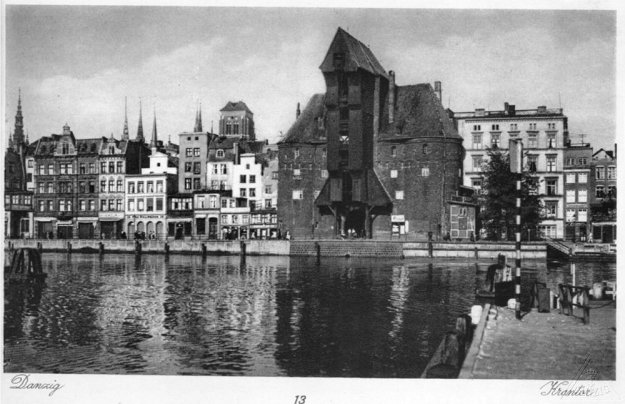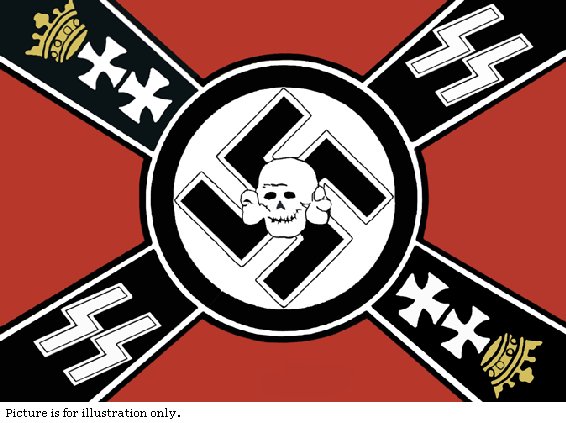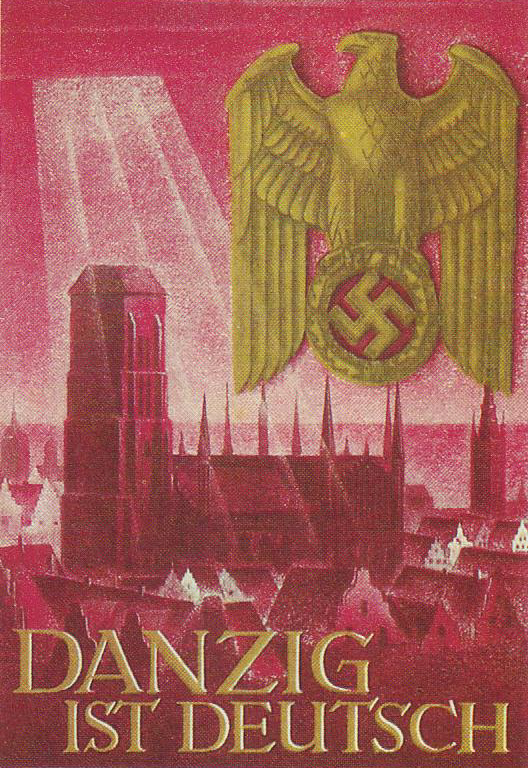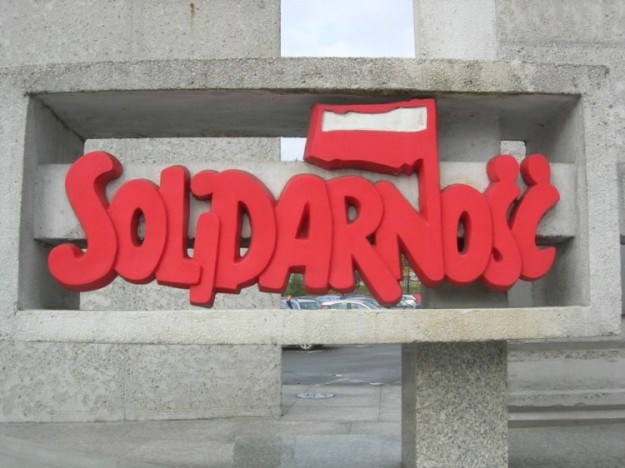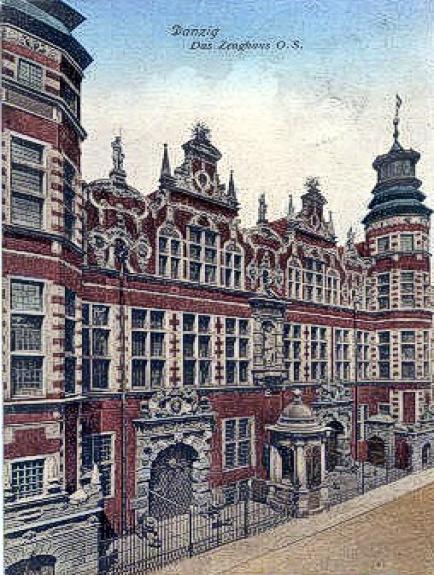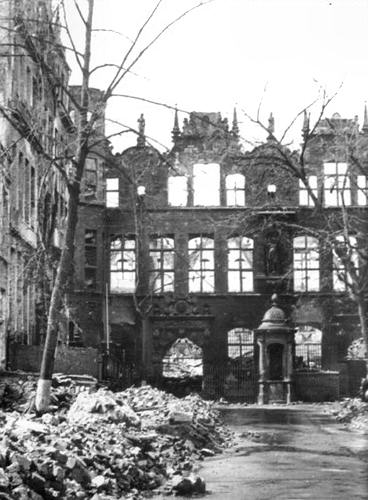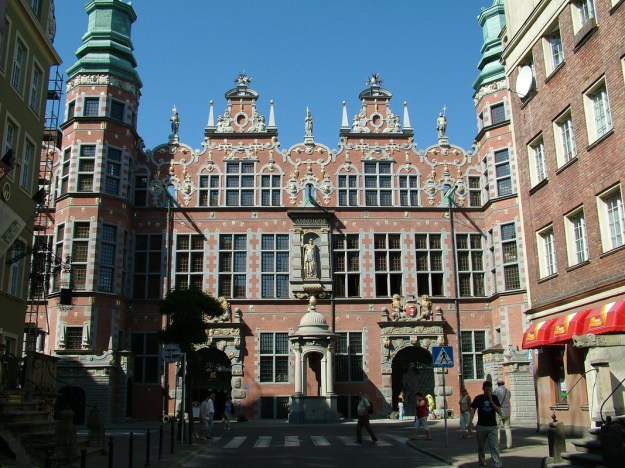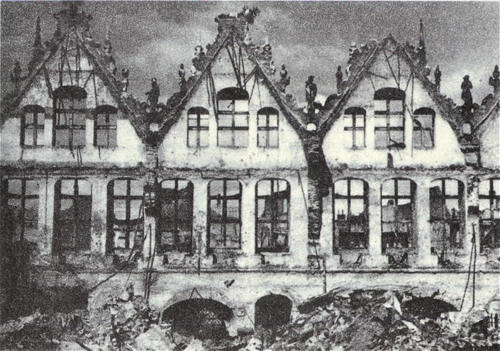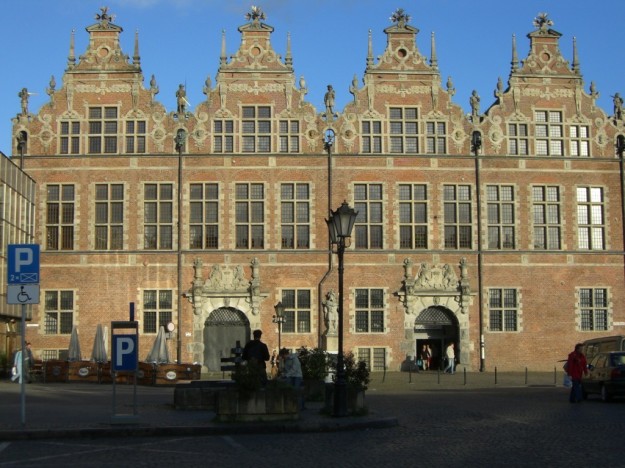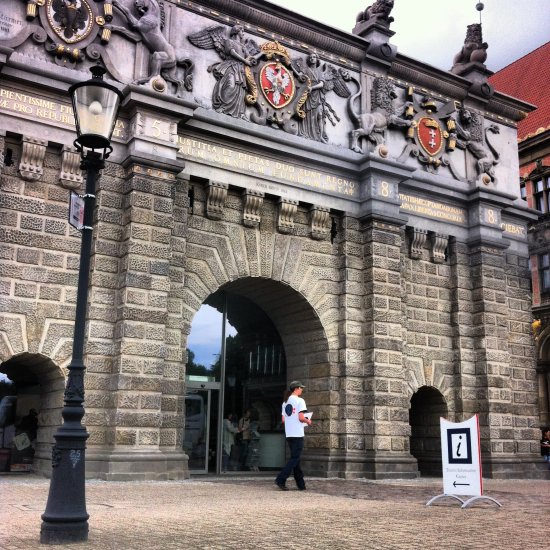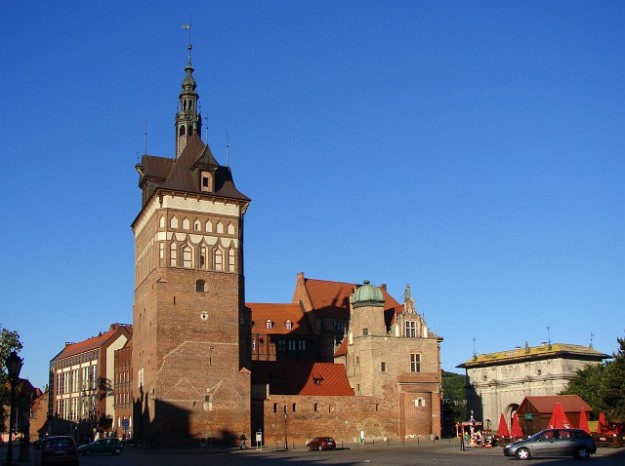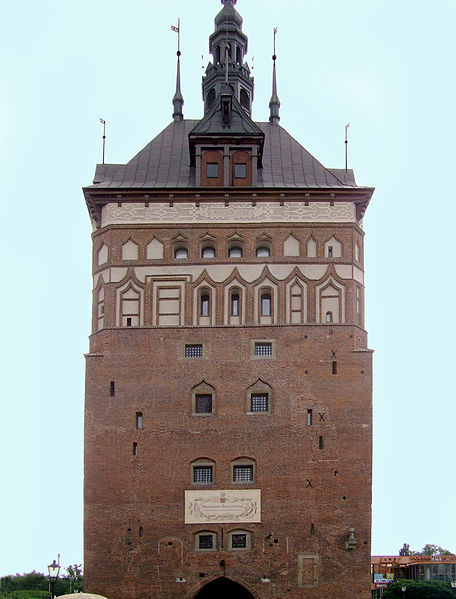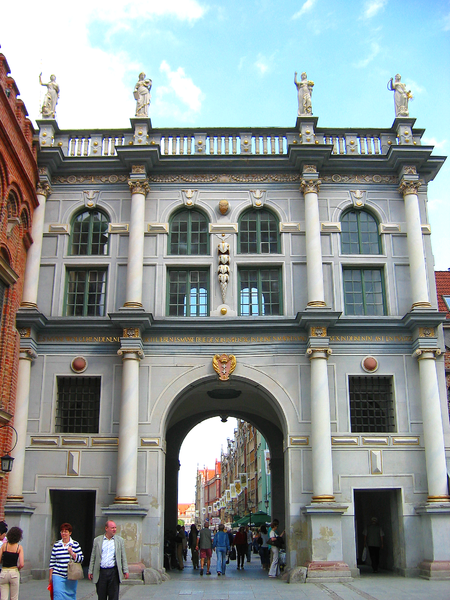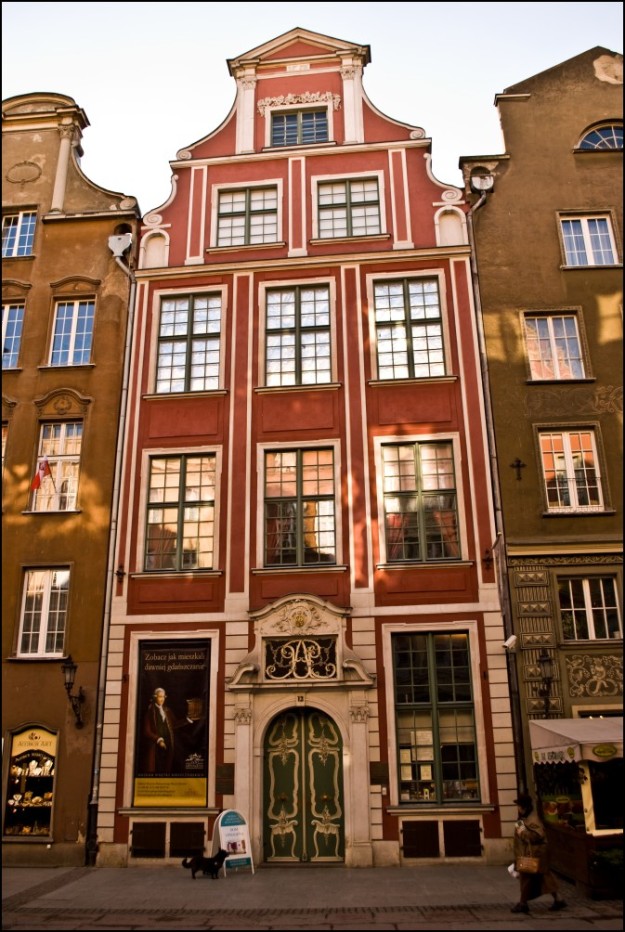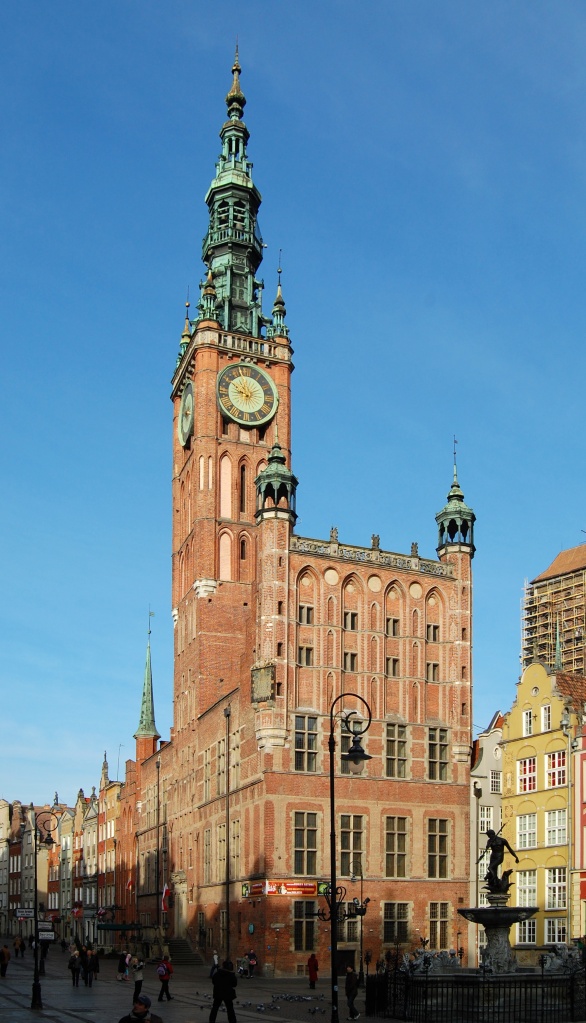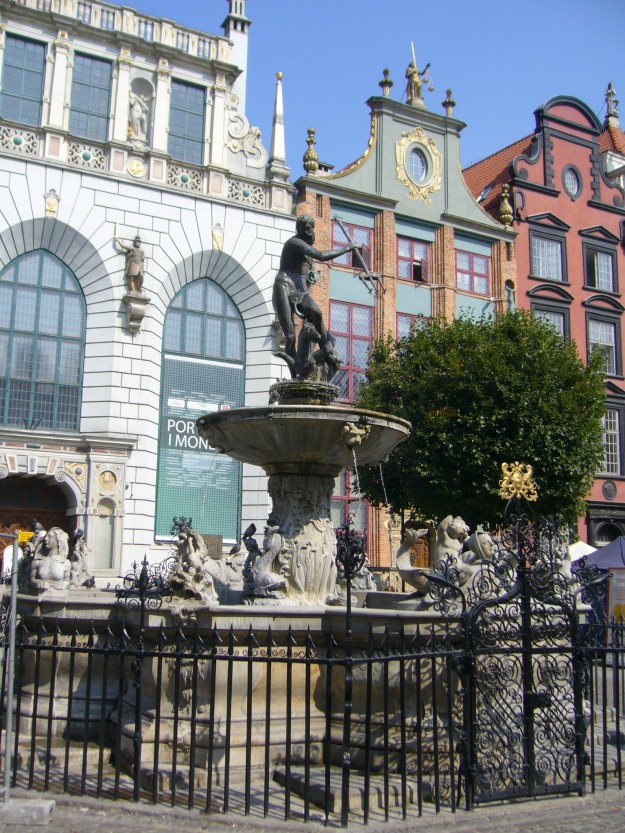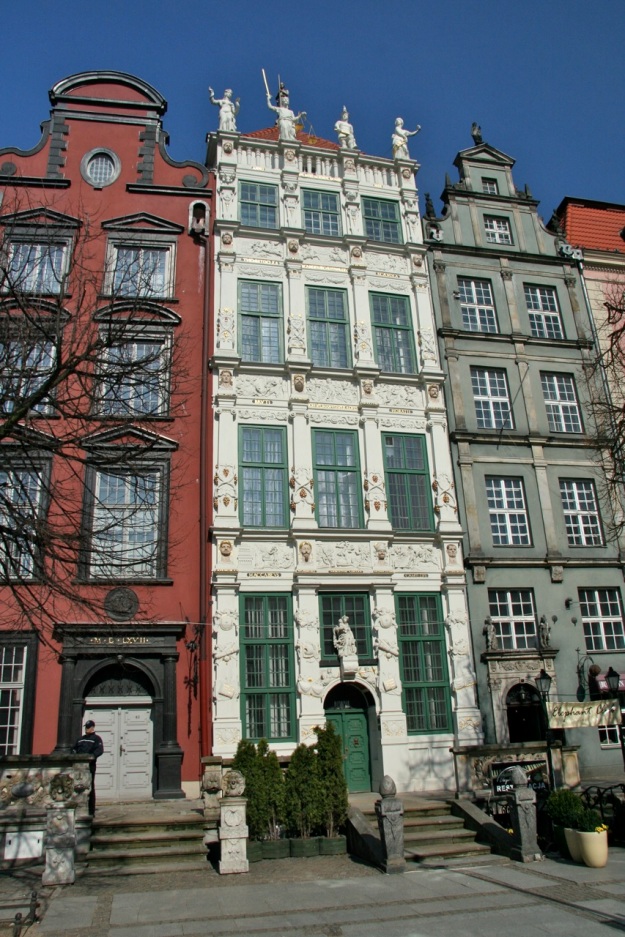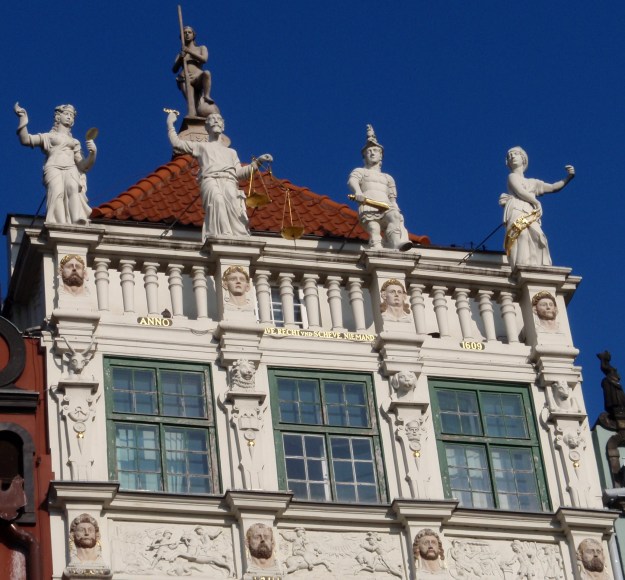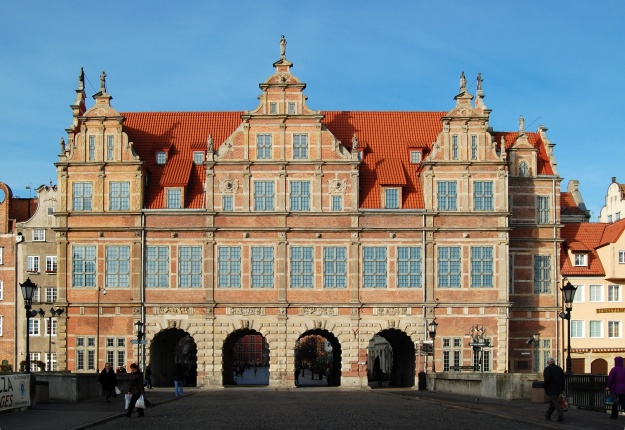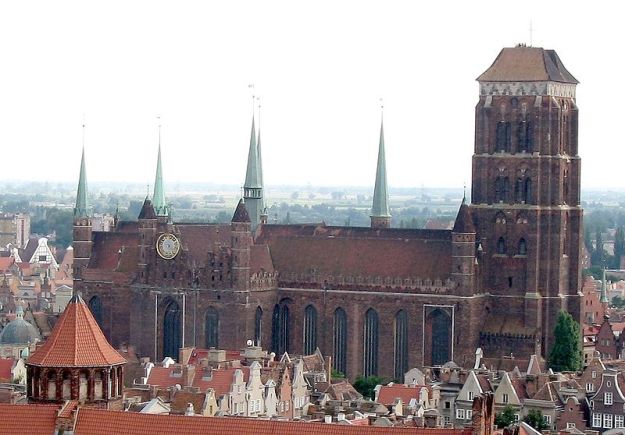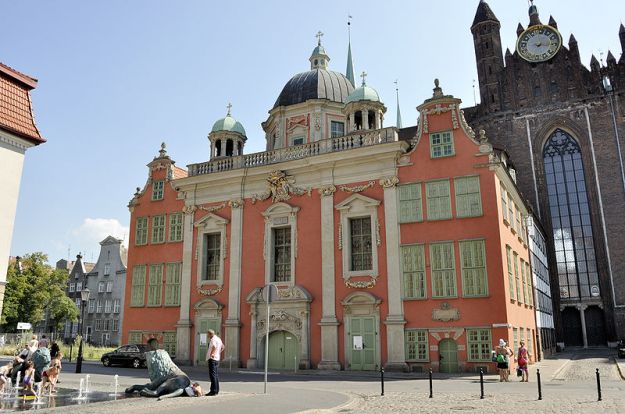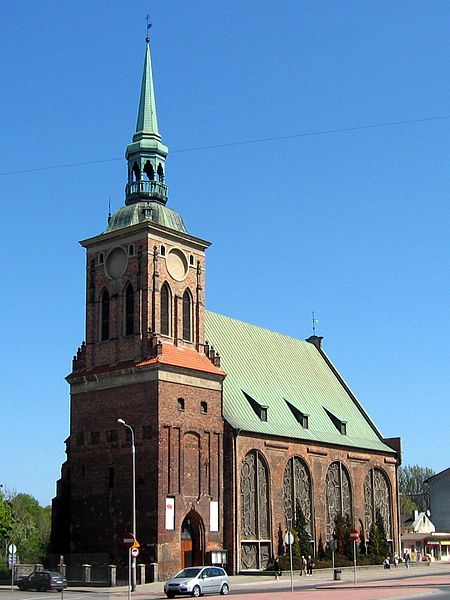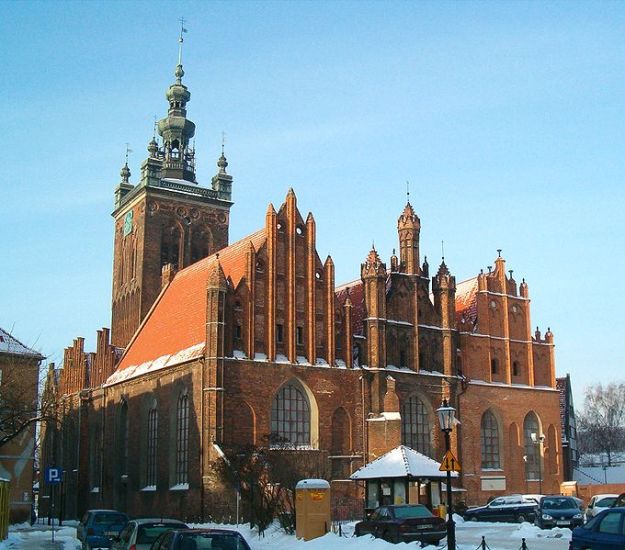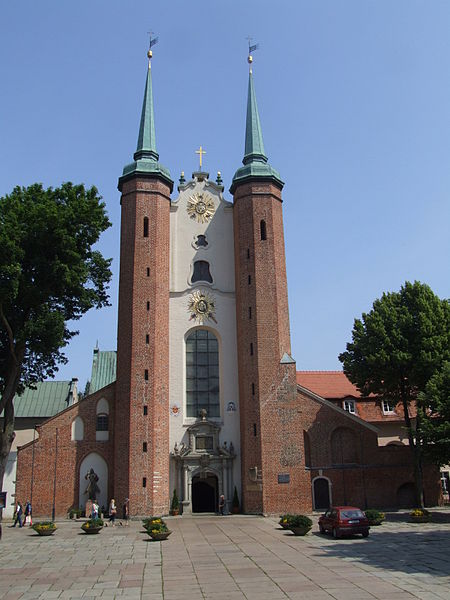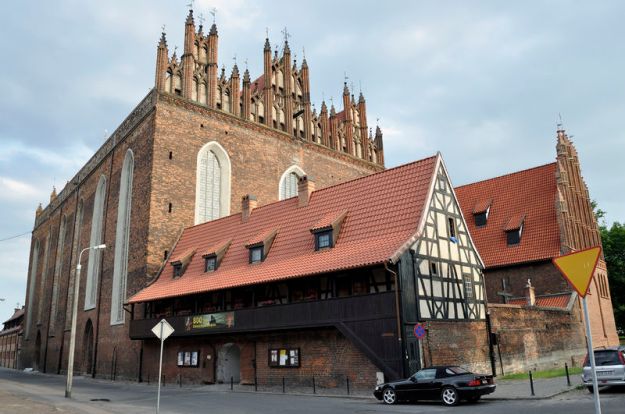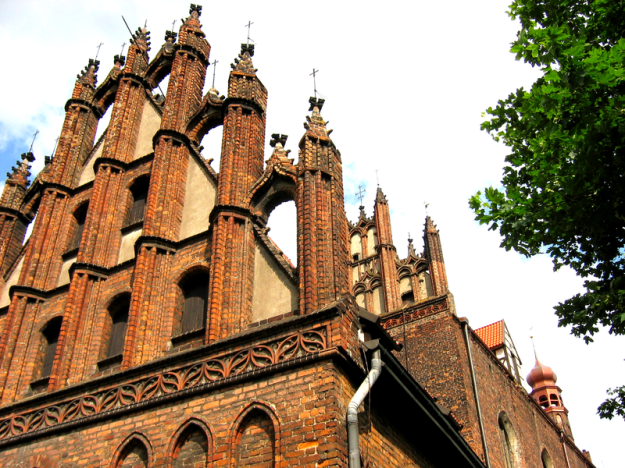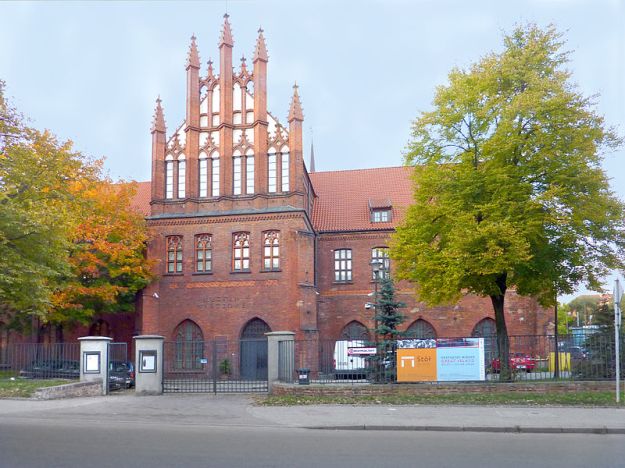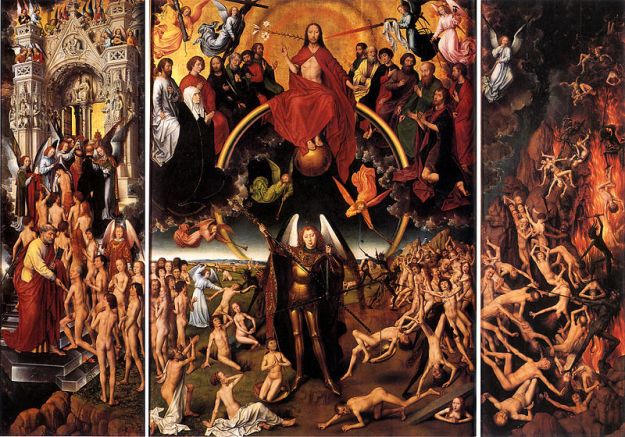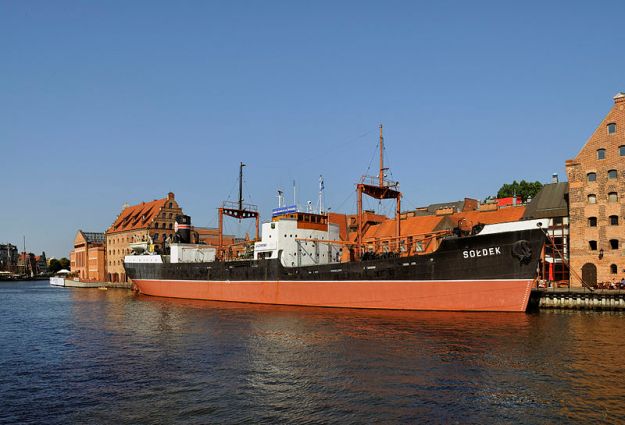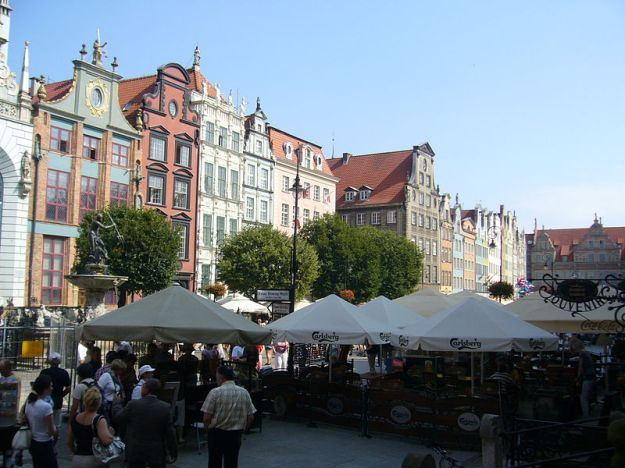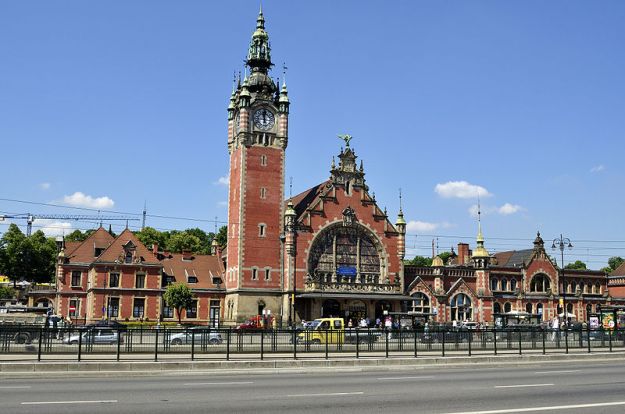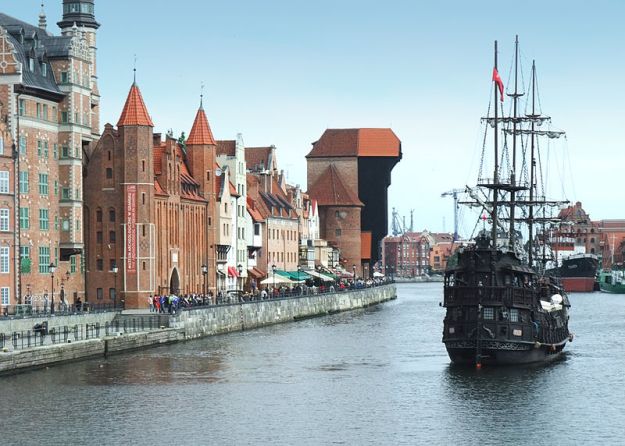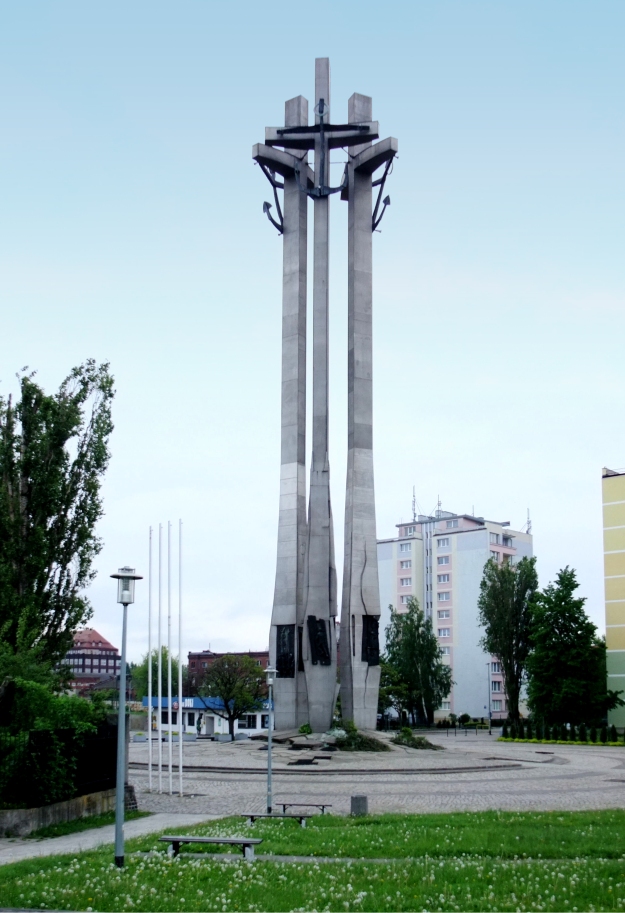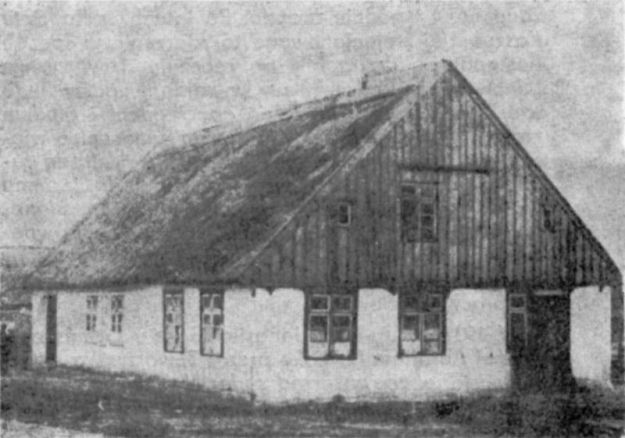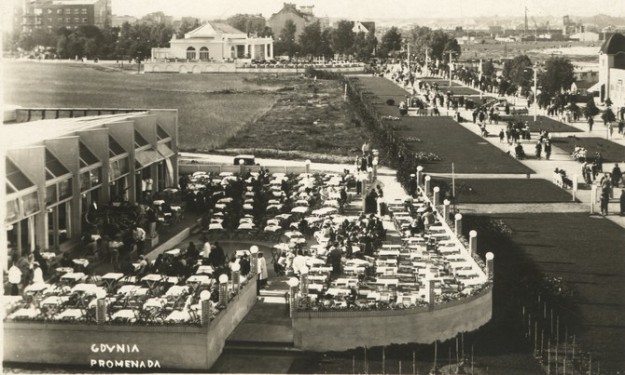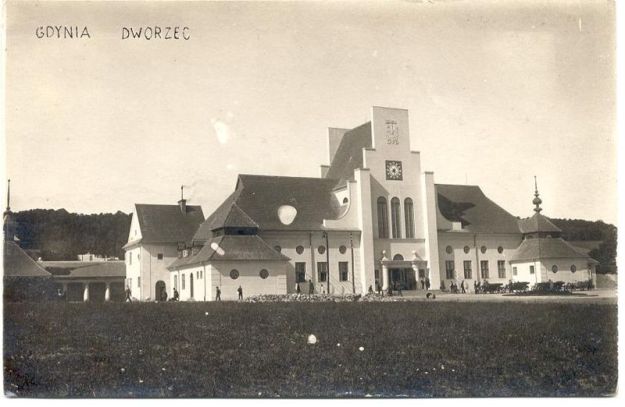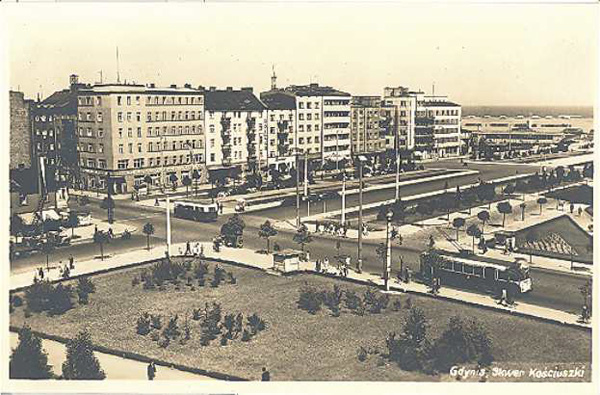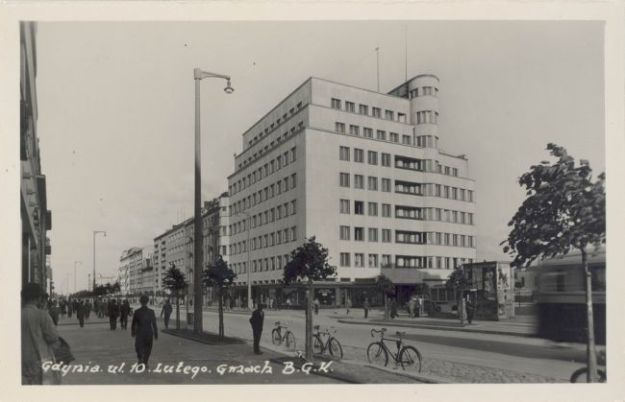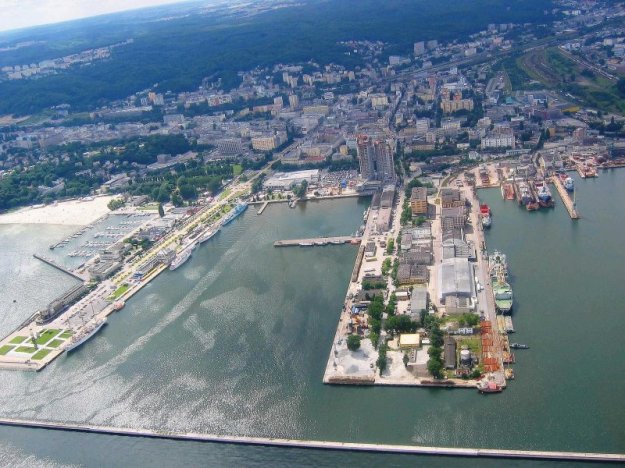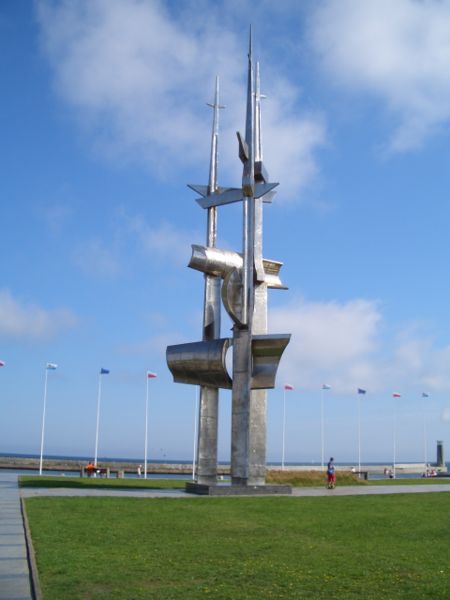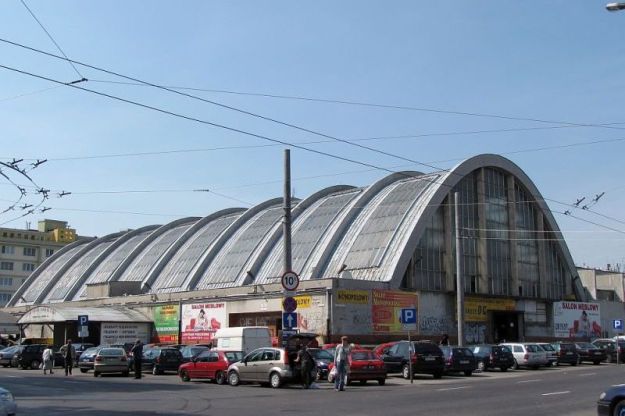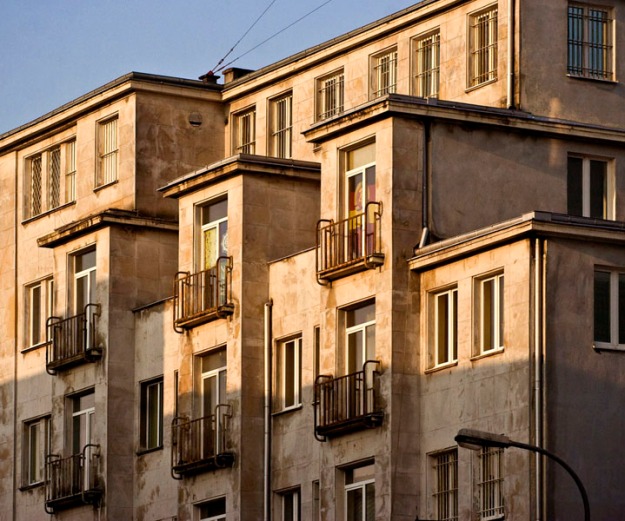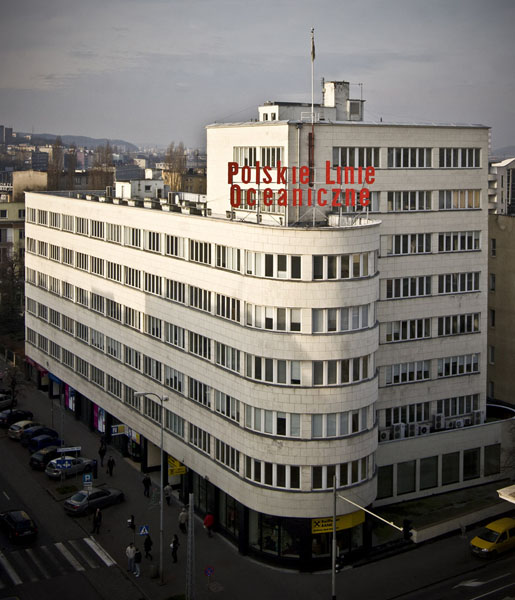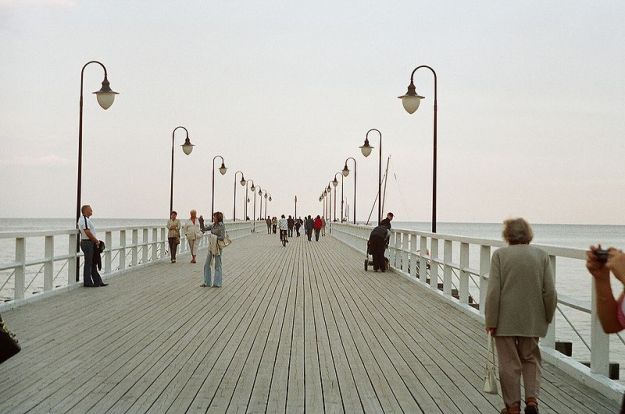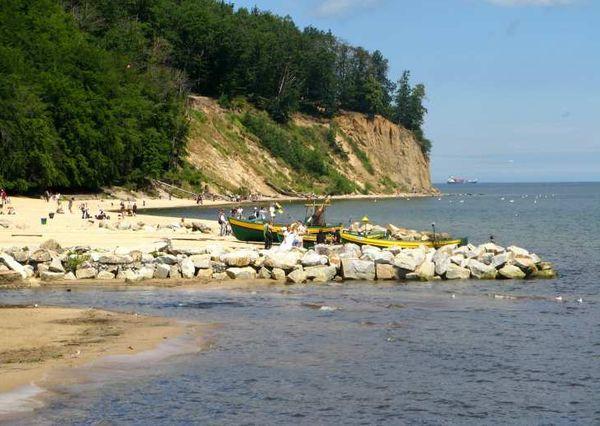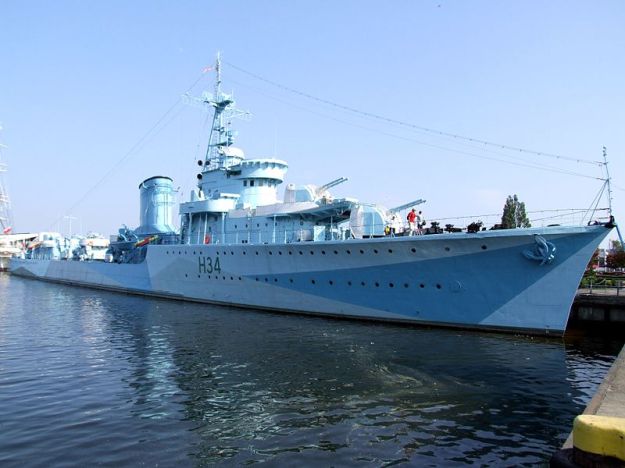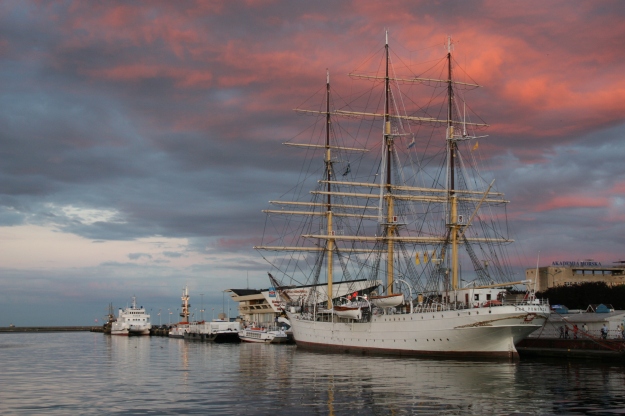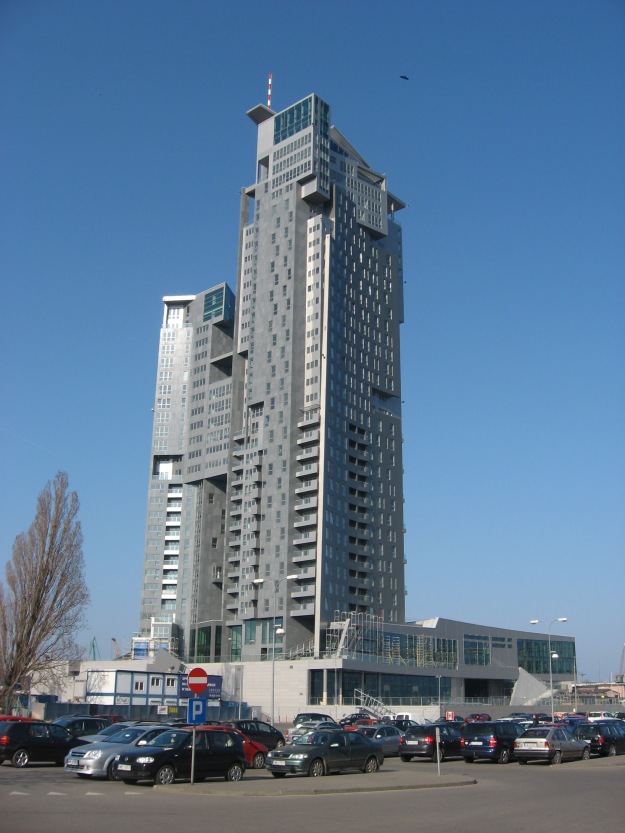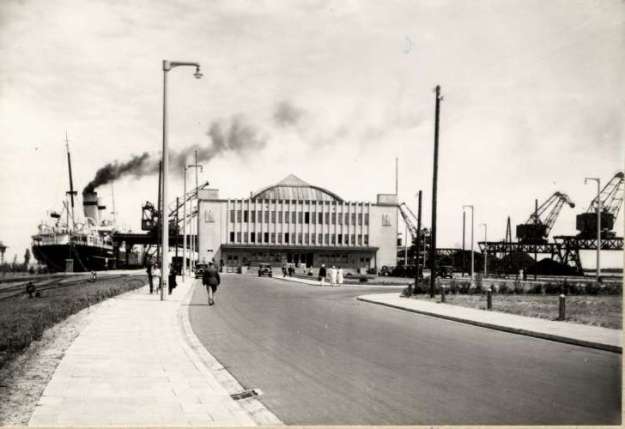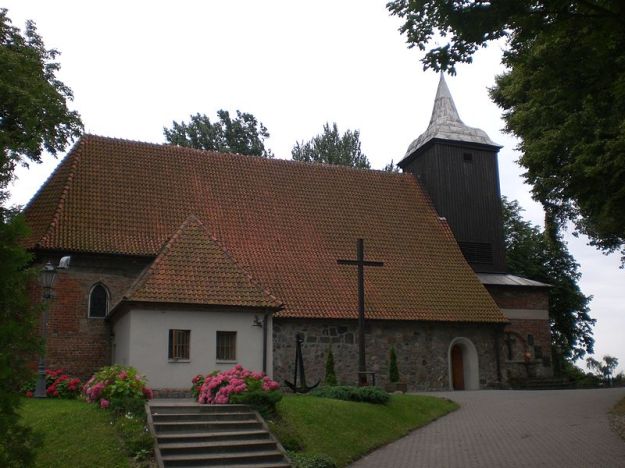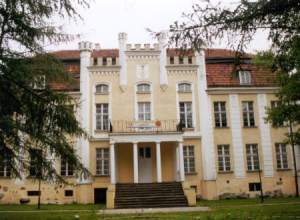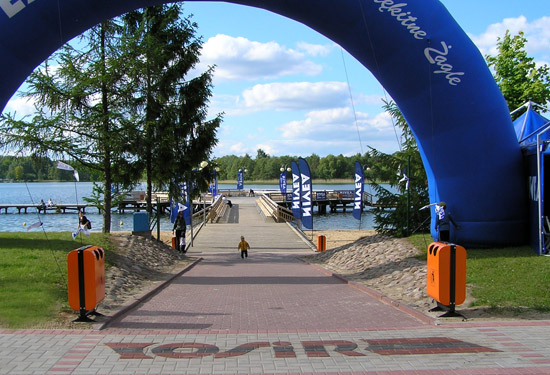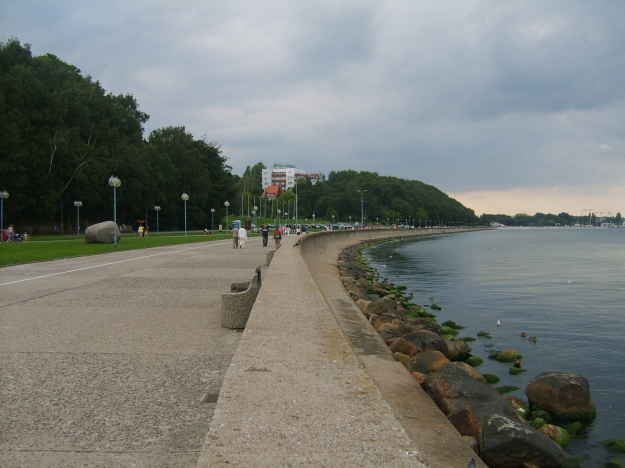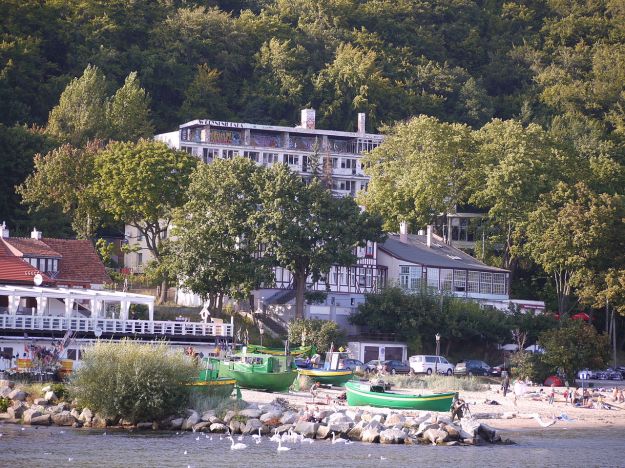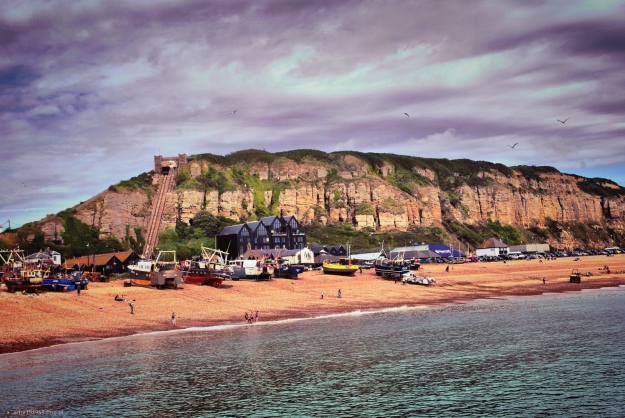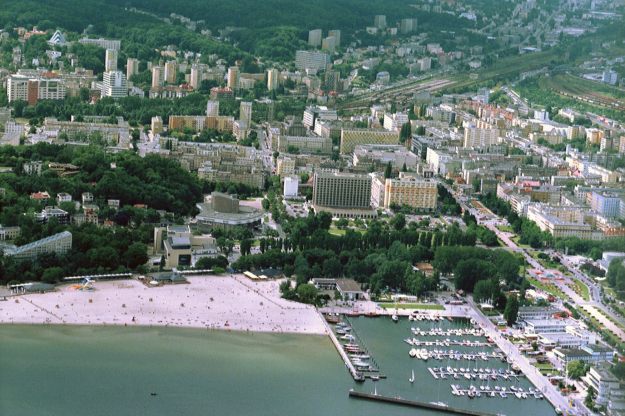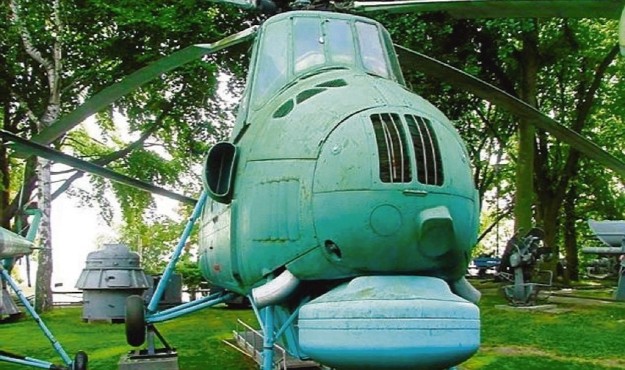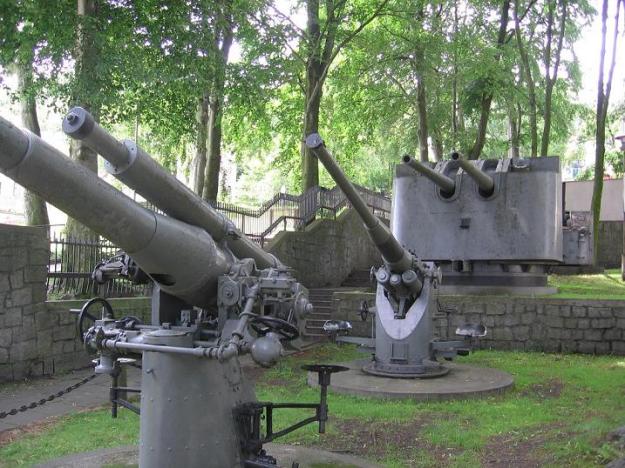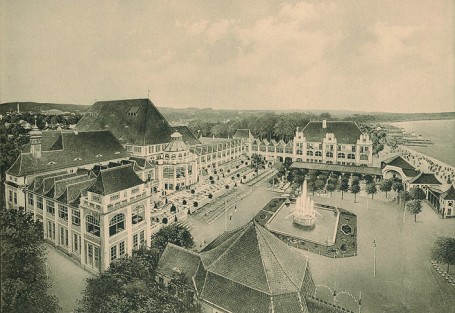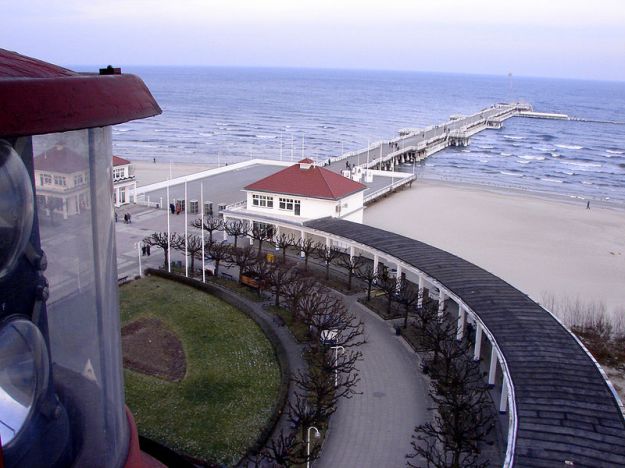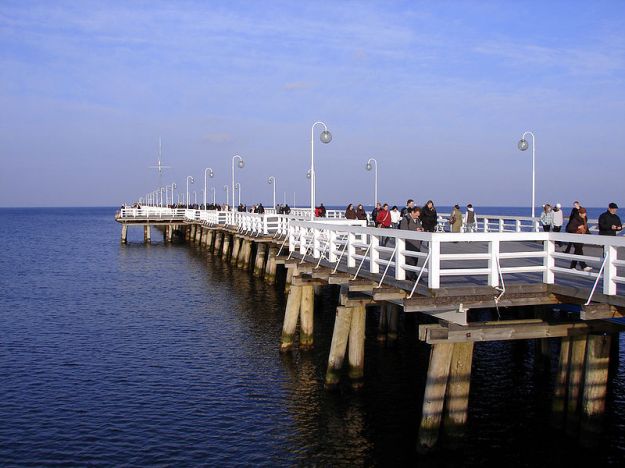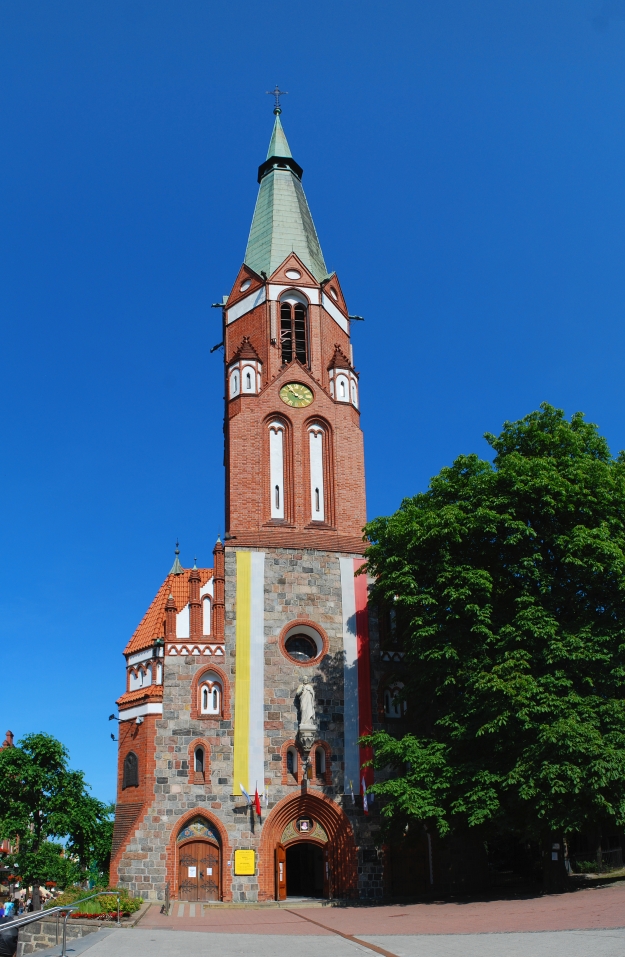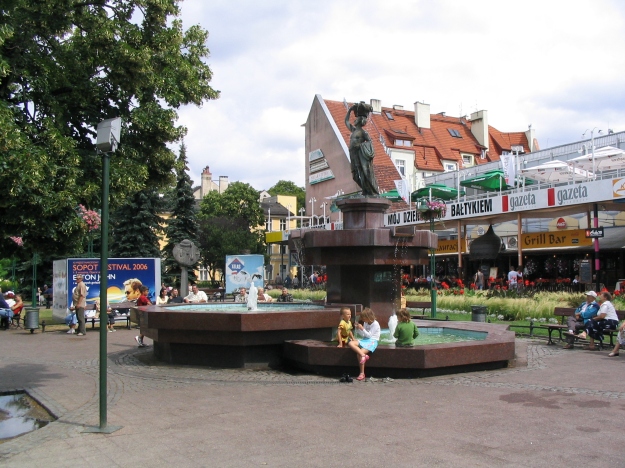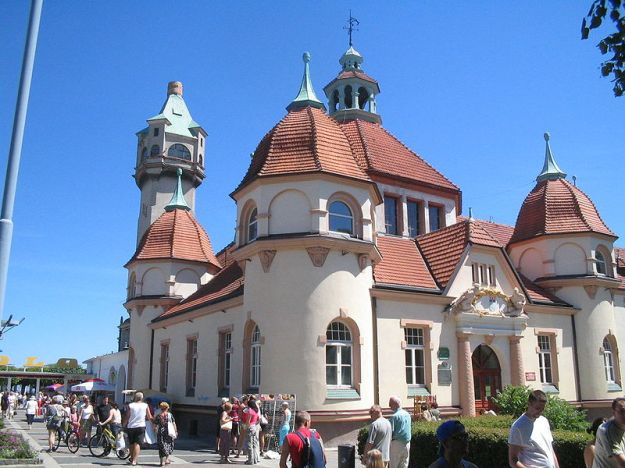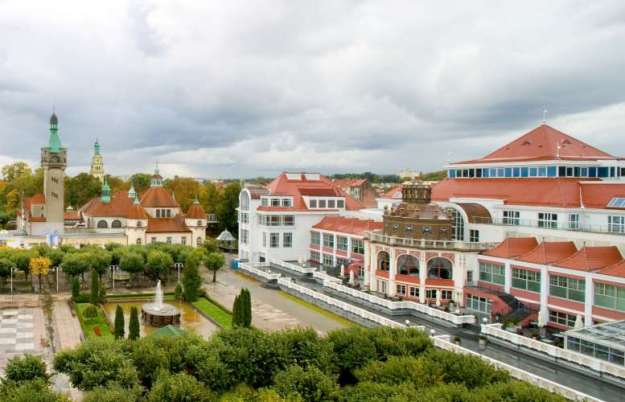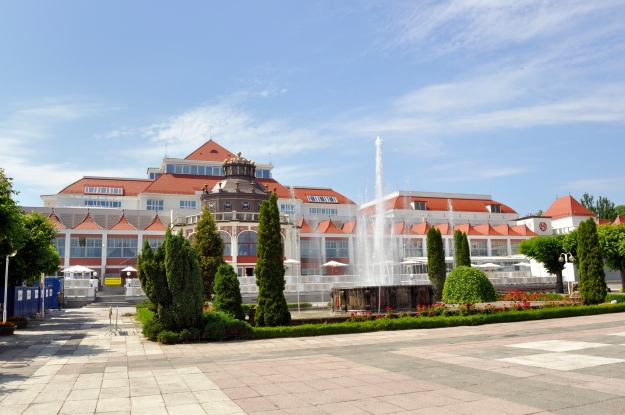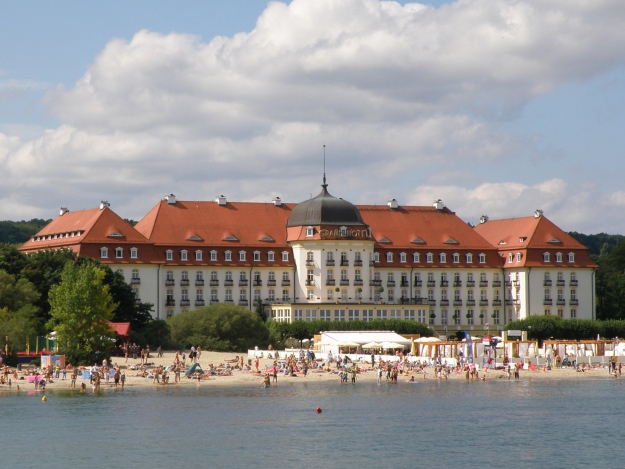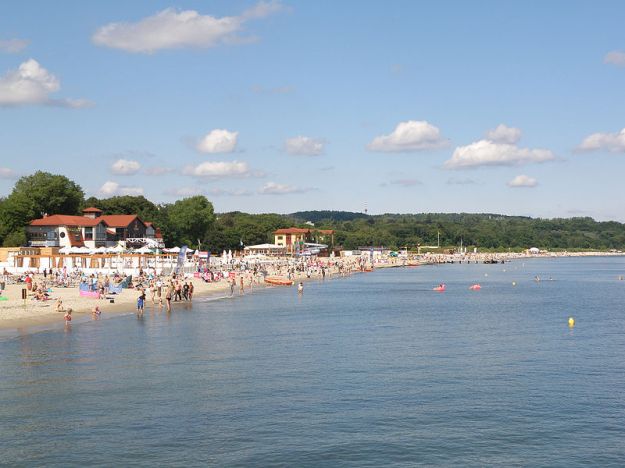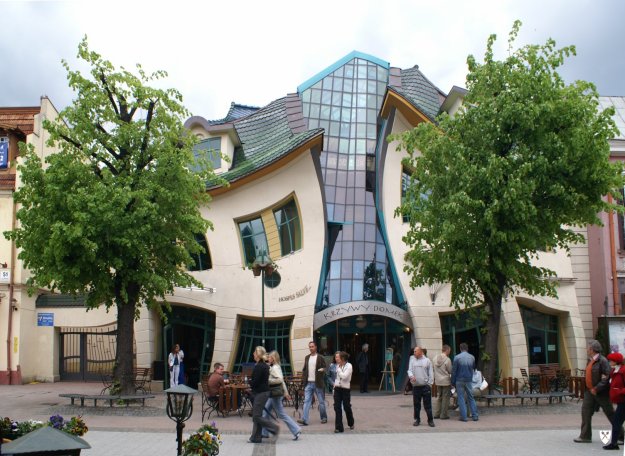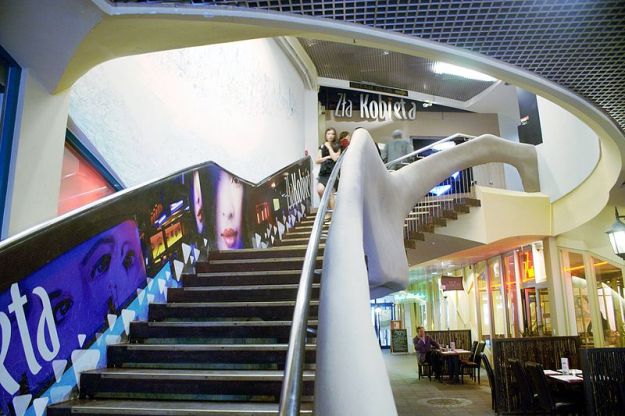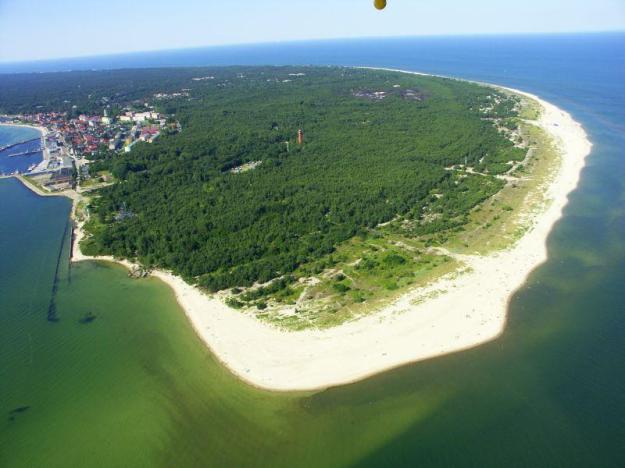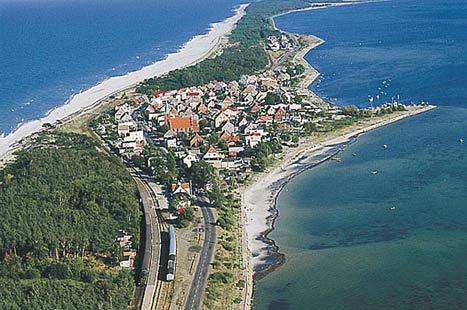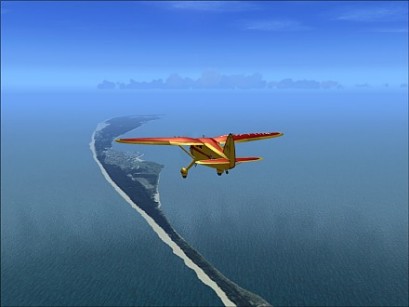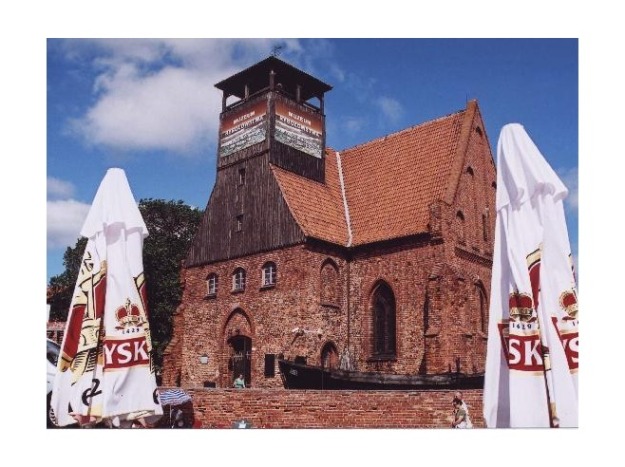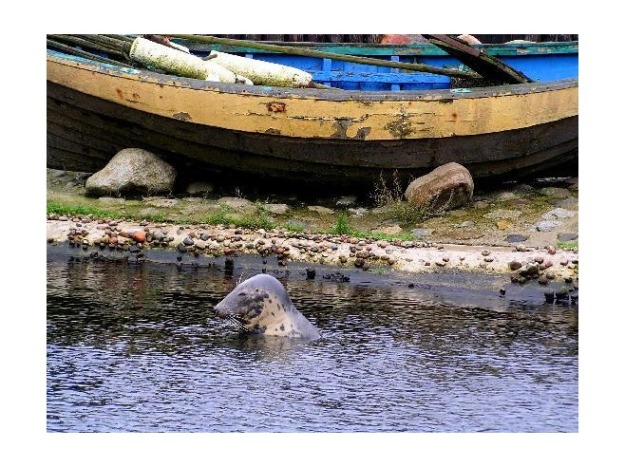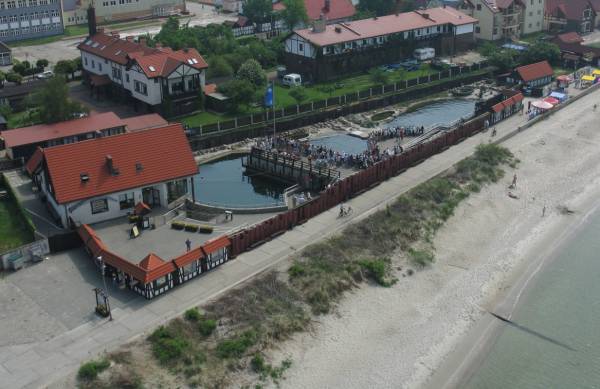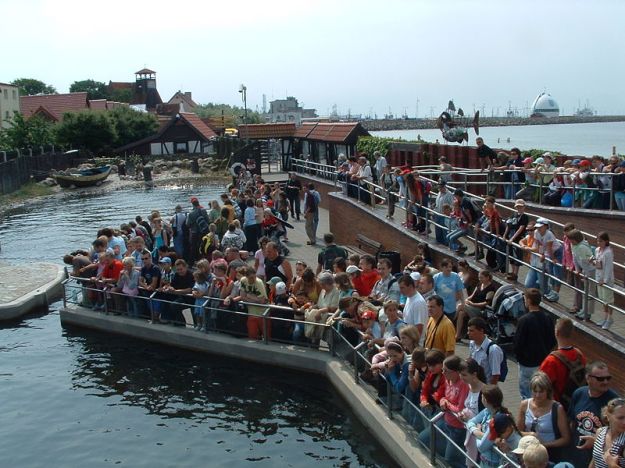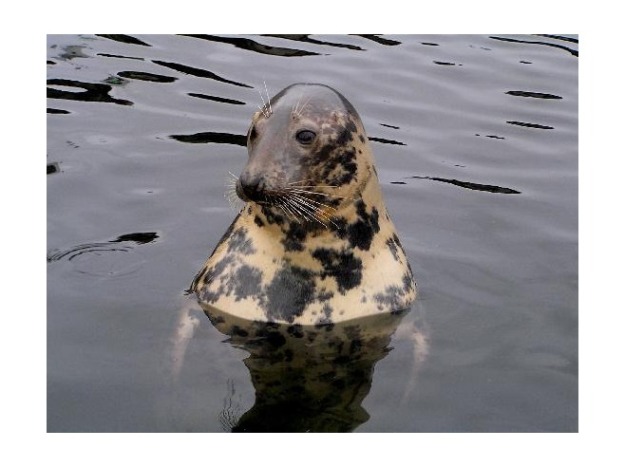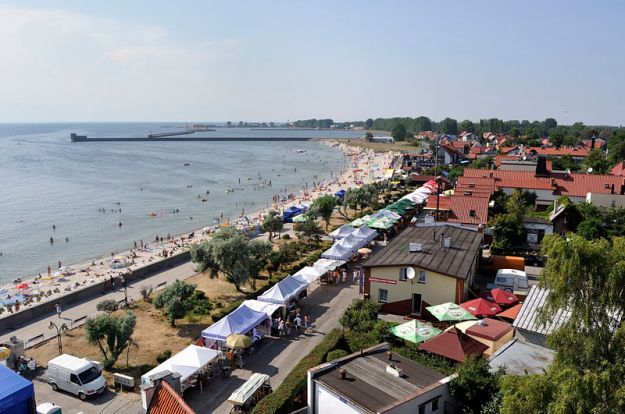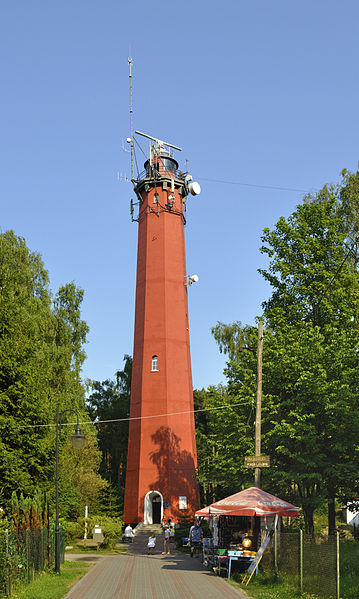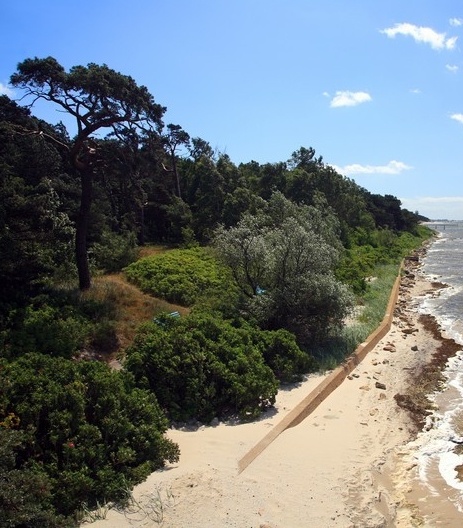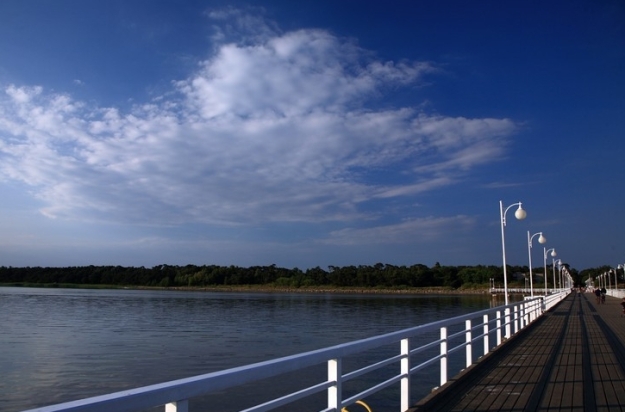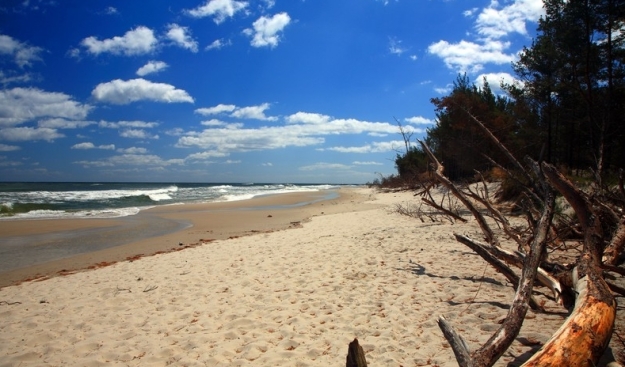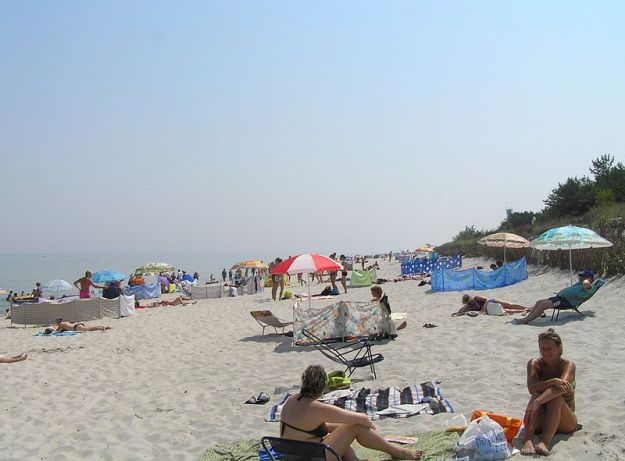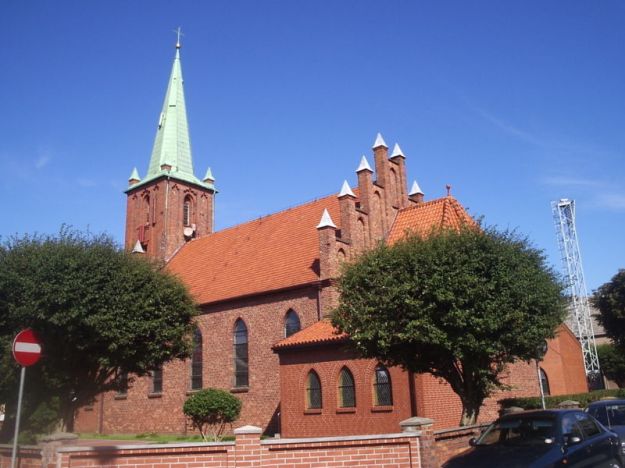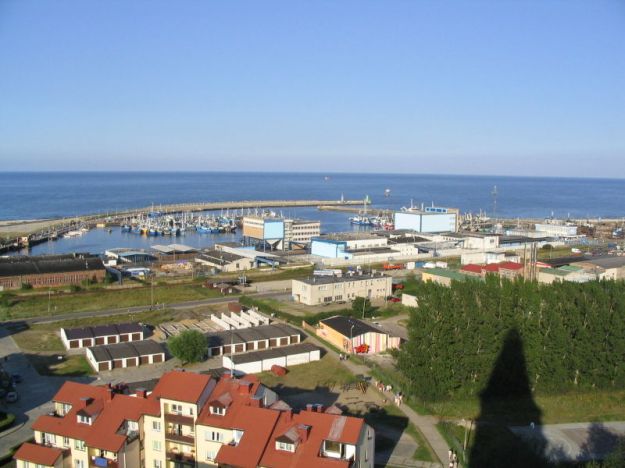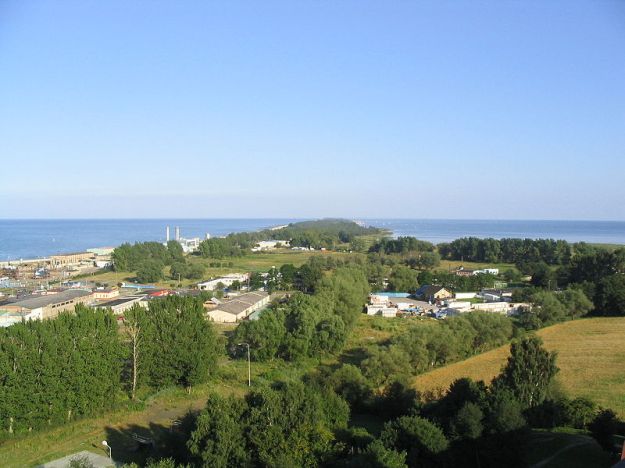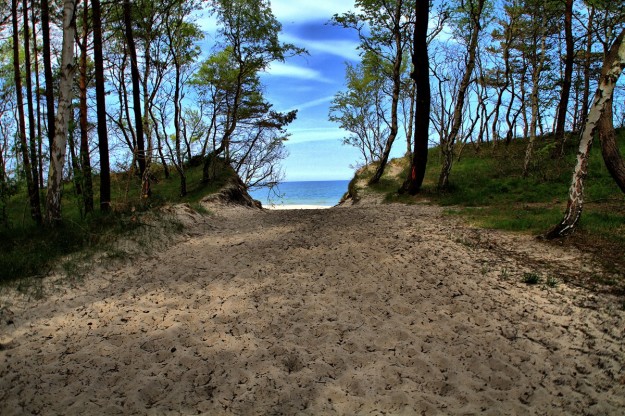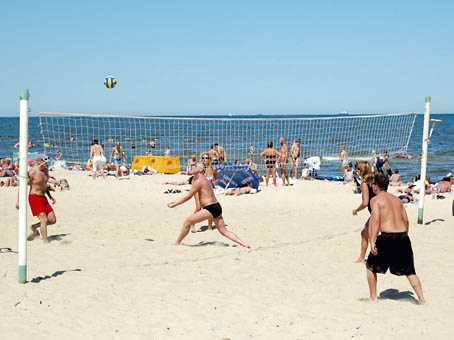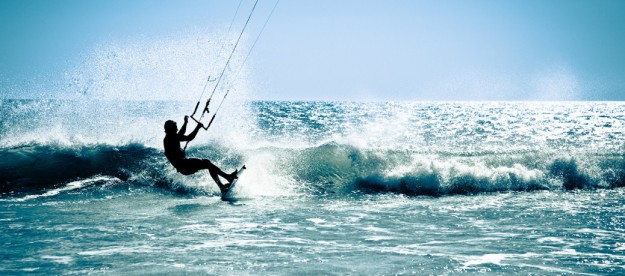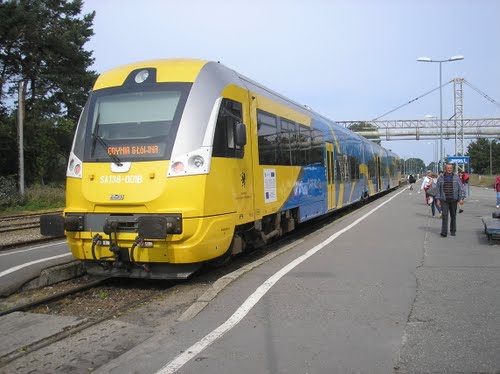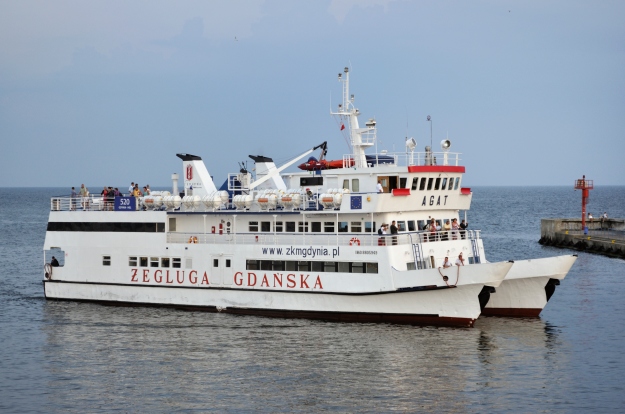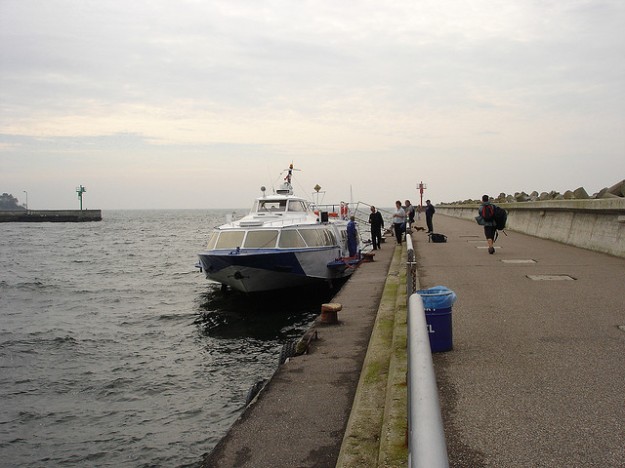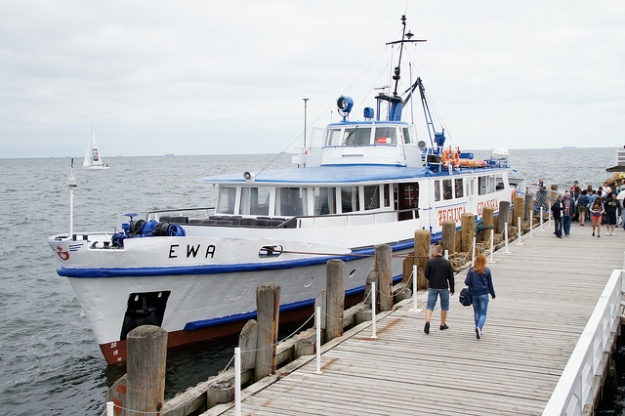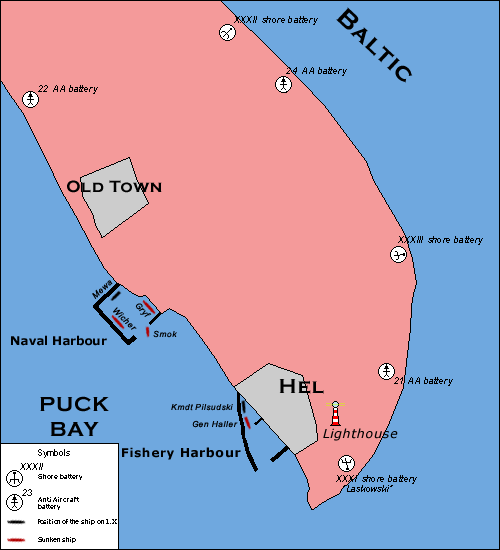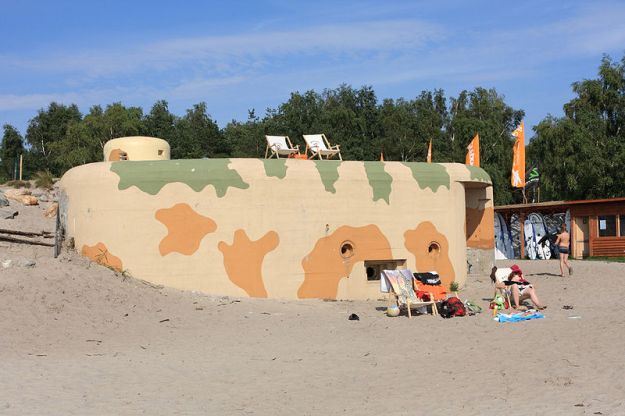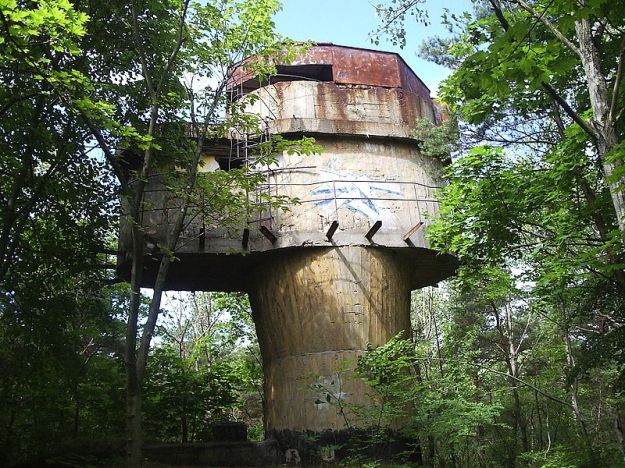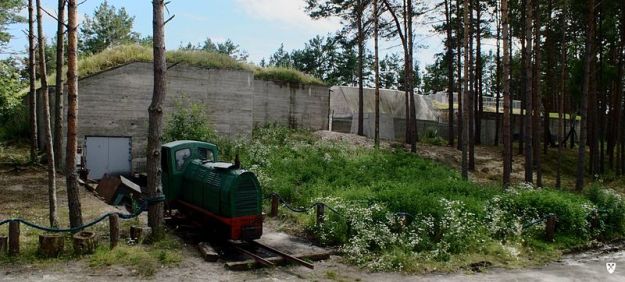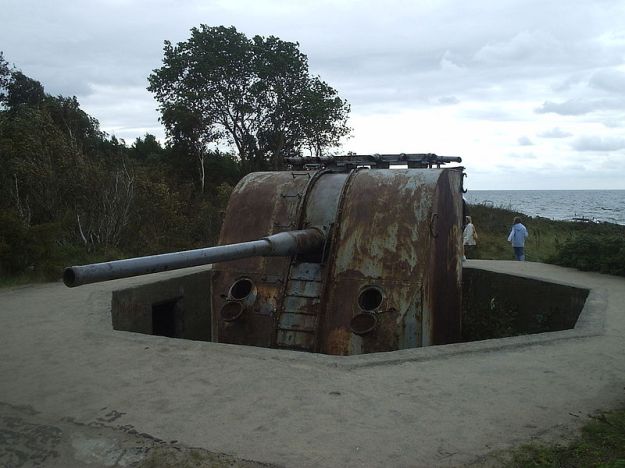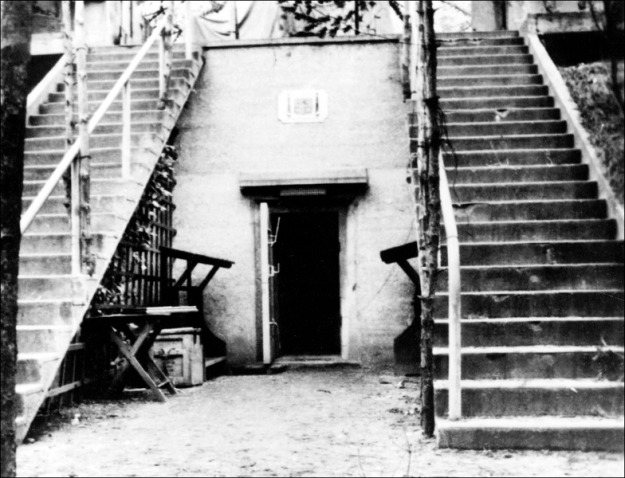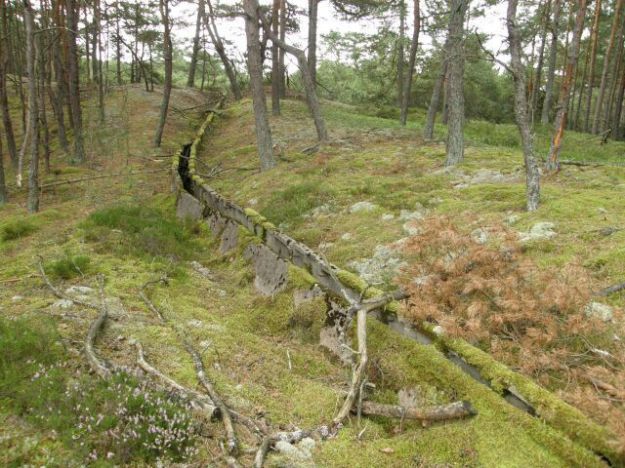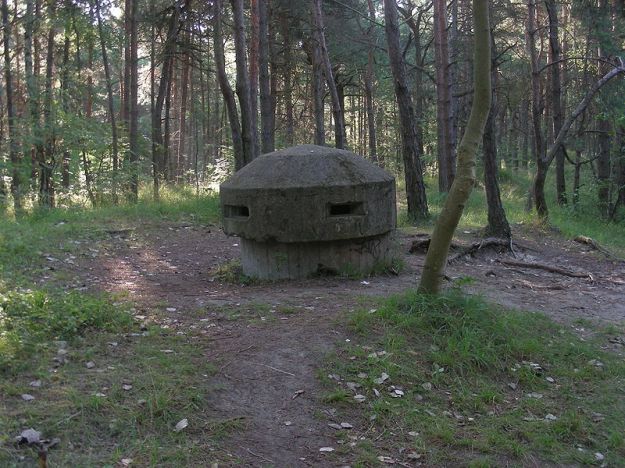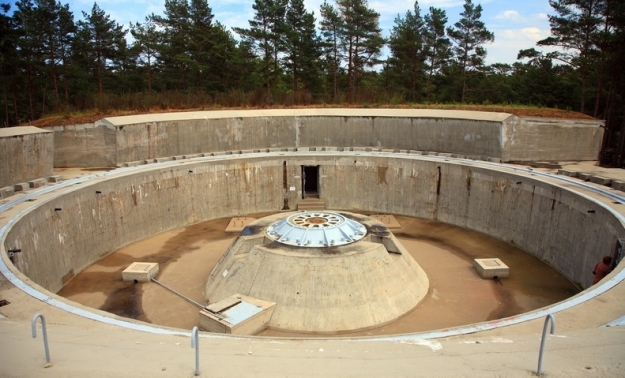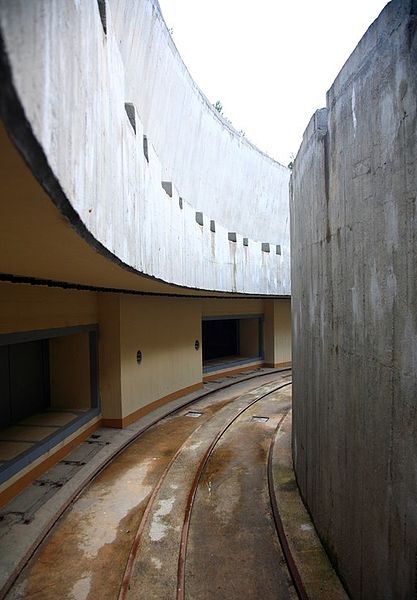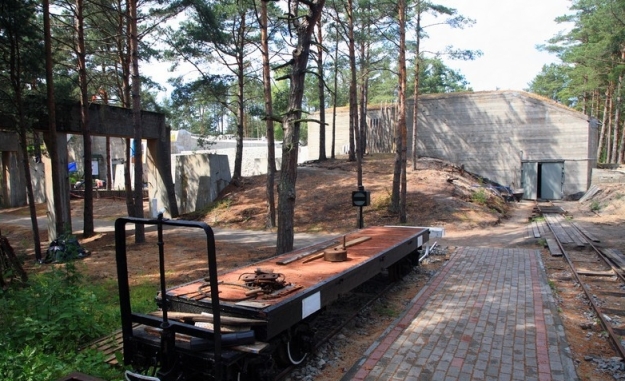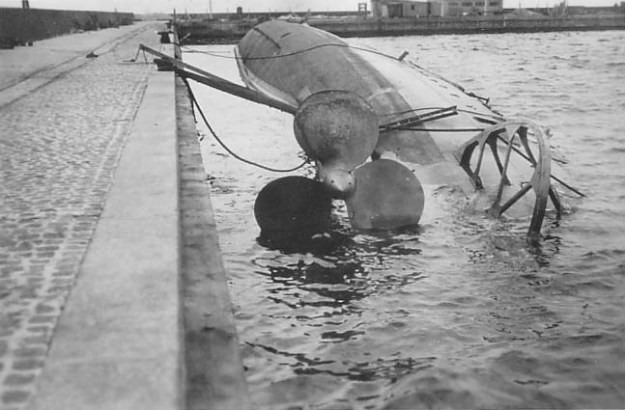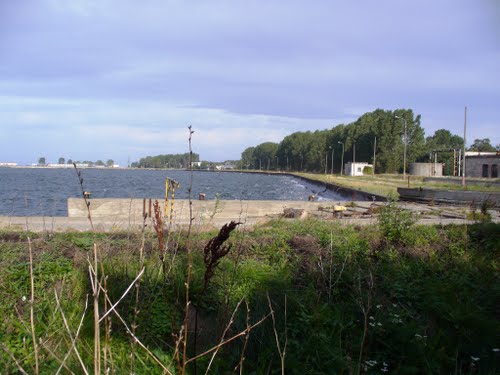About the seaside
The Polish sea coast is a fair old ways from Kamionka Wielka, but we plan to get up there and for sure it is worth a trip. We’ve put this page together to help people considering a “different” Polish destination.
For us, it’s roughly 700km to Gdansk or 770 to Szczecin – for those British travellers flying in, it’s a two-hour hop to Gdansk Lech Wałęsa Airport or “Solidarity” Szczecin–Goleniów Airport – check Ryanair and Wizzair for regional flights. (Don’t worry too much about us – it may be a long drive, but Poland has reasonably priced internal flights (Krakow to Gdansk direct in 1½ hours or 2½ hours to Gdansk or Szczecin with a stop in Warsaw) and there are several through trains to Gdansk and Gdynia or Szczecin (8-12 hours, including sleeper services) or coaches.)
“Solidarity” Szczecin–Goleniów Airport
So, what will you find on Poland’s Baltic coast – we’d like to draw your attention to four towns and a peninsula – Szczecin, Gdansk, Gdynia, Sopot and Hel.
Gdansk Lech Wałęsa Airport
In days of old, when knights were bold, much of the north-west of what is now Poland was up for grabs.
Founded back in C8, by C12 Stettin/Szczecin was already one of the more important and powerful seaports of the Baltic Sea south coasts.
Beginning with the West Slav settlement of Pomerania, the area passed through the hands of (the Dutchy of) Poland, the Holy Roman Empire, the Liutician Federation, Poland (again, and again pre-Kingdom), Saxony, Denmark, HRE again, Denmark again, Pomerania, Sweden, Prussia, France, Prussia, Germany and finally, post 1945, Poland.
Fortunes rose and fell over this long period, but by 1939 Stettin was Germany’s 3rd largest port, and her largest port on the Baltic. Stoewer cars were built in Stettin from 1899 to 1945, and by 1939 a reichsautobahn ran from Berlin to Stettin.
With such a history you’d expect Szczecin to be an interesting place to visit, and you’d not be wrong. Our brief run-down goes something like this – we’re following the 7km red lane mapped by the town authorities.
Starting at the main station, the red lane is marked, but you might also like to pick up a map at the visitor centre. First stop is at the Post Office (1872/4), with its recently renovated glass-roofed main hall. The Barracks, in ul Sw Ducha date from 1818.
The only remaining parts of the medieval city walls are at 9 ul Podgórna. Next up is the gothic Church of John the Evangelist, built in C14. The first bridge at the site of the Long Bridge was built in 1299. The present bridge incorporated a bascule (raising) system until 2001.
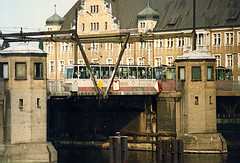 The Old City Hall is now a museum to the history of Szczecin. The Loitz family house, now the School of Arts, one belonged to a wealthy merchant baker’s family. The castle of the dukes of Pomerania was a home to the Gryfit dynasty for close to 500 years. It was bombed during WW2 and since restored – it contains a theatre, museums and offices.
The Old City Hall is now a museum to the history of Szczecin. The Loitz family house, now the School of Arts, one belonged to a wealthy merchant baker’s family. The castle of the dukes of Pomerania was a home to the Gryfit dynasty for close to 500 years. It was bombed during WW2 and since restored – it contains a theatre, museums and offices.
Keep an eye out for the griffin over the central portal of the palace riding school, as you head for the Virgin Tower (originally part of the medieval walls), the Maritime Museum (1913) and on to the Voivods Offices (1906-1911).
Standing on the site of the former monument to the Kings of Prussia and Emperor of Germany, the statue of the great Polish Bard Adam Mickiewicz was unveiled on the 1,000th anniversary of the founding of the Polish state (3.5.60). In the PAZIM Centre the SAS Hotel has a café on the 22nd floor, with great views. The Royal Gate (1725-1728) carries the crest of the Prussian Eagle encircled by the chains of the Black Eagle and royal crown.
The original church of St Peter and Paul was built in 1425-1440 but, after destruction by gunfire in 1677 was renovated in 1678-1702. You’ll see the mast of the SS Captain K. Maciejewicz, a steamer built in Bremen in 1925 which was last used a the High School of the Sea in Szczecin, before the school moved into the current buildings on land. The ship was scrapped in Sweden in 1985. Next are the houses occupied by the professors of St Mary College since the C14. The IX Lyceum of Monte Cassino Heroes, built 1830-32, was originally a “Gymnasium” of St Mary, but was re-named to honour the Polish forces at the famous victory in WW2, including Wojtek the bear – who carried ammunition for his comrades, and died in Edinburgh Zoo in 1963.
Speaking Polish, John reckons, requires time to look over what lies ahead, a pause for an in-your-head rehearsal, then a deep breath and a run at it.
So … Szczecin.
Sz – sh
C – ts
Z – j
Ec – ets
In – een
How’d you do?
At ul Farna 1 you’ll find the house of Christian August, Prince of Anhalt-Zerbst. This was the childhood home of his daughter, Princess Zofia Augusta, who was born here in 1729. Young Zofia married Karl Peter Ulrich, son of the Duke of Holstein-Gottorp. From 5 January 1762 – 9 July 1762 Peter ruled as Tsar of Russia, until he was overthrown and his wife took his palace, as Catherine II, aka Catherine the Great. The Cathedral was originally built in 1187. The current building was completed in the 1970s, following the previous destruction of WW2. The great bell dates from 1682.
Now you pass the Flora statue and baroque fountain, on your way to the Grumbkov Palace. Built in early C18, the Palace is now the medical school. Next up, the late C18 Ionic (or Classic) Palace.
The Palace of the Parliament of the United Pomerania at ul. Staromłyńska 27 is now an art gallery and archaeological unit of the National Museum. You may spot the plaque commemorating the establishment of the Polish Scout movement in Szczecin in 1934 on your way to the 1905 Prussian Royal Post building and the church of St John the Baptist.
When you see the children’s hospital you’ll know you’re on the right track. You’ll also see General Anders Park on your way to the Church of the Sacred Heart of Jesus and the Garrison Church of St. Wojciech.
The Monument to Kornel Ujejski, a great Polish patriotic poet, was originally in Lvov, where he died in 1897. Lvov was then in Poland. The statue was moved to Szczecin in 1956. The Port Gate, formerly the Brandenburg Gate and later Berlin Gate, was built in 1724-40.
Your penultimate stop is the Red City Hall, built in 1875-79. Finally, there’s the anchor and fountain between the City Hall and the Post Office.
That’s by no means the end of the reasons you should give Szczecin a chance.
There’s one more we’ll include, for you fans of all things military – the S-1 bomb and fallout shelter.
Check here for current opening times. http://www.podziemnyszczecin.com/uk/index.htm
Incidentally, we’ve used Stettin a couple of times above, and will probably refer to Danzig a couple of times further on but it’s worth making you aware of the fact that Poles dont really ike to hear their cities given their German names. When the Polish borders were re-drawn after WW2, their was a huge operation to move populations – not just out of ex-German Poland but also ex-Polish Ukraine, and so on … millions of people were moved so that their ethnicity matched their new nationalities. So what were German cities in the north and west of Poland became firmly Polish.
Gdańsk
Lying at the mouth of the Motława river and connected to the Vistula, Gdansk first appears in the record in 997. Things were quiet for a couple of hundred years after that, but during a long and varied history the city became a possession of the German Empire in 1871.
Danzig 1906
By virtue of the Treaty of Versailles, at the end of WW1 Poland regained its independence but not Danzig – the city and nearby 200 towns and villages formed the Free City of Danzig – an effective German oblast, even though notionally with close links to Poland.
As you’ll read below, the customs union with Poland did not work out, and the nearby village of Gdynia was developed into a Polish seaport because the port and city of Danzig was very much under the control of the majority German population.
The flag for the SS-Heimwehr Danzig, motto “Dearer dead than to become Polish”. Nice!
Handed to Poland as a ruin in 1945, the German population was expelled and replaced by Poles as the city came under Polish rule and changed its name to Gdańsk.
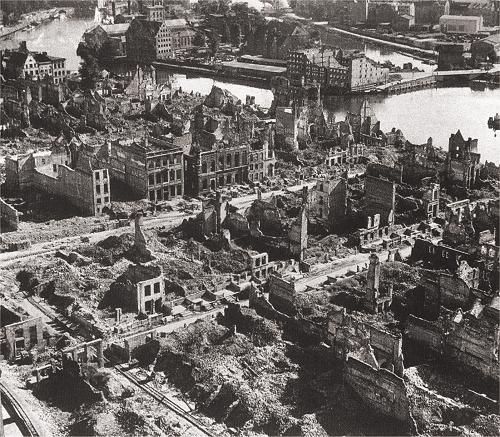 Gdansk was the birthplace of Solidarność (co-founded by Lech Wałęsa, second President of Poland) and of Poland’s current prime minister, Donald Tusk.
Gdansk was the birthplace of Solidarność (co-founded by Lech Wałęsa, second President of Poland) and of Poland’s current prime minister, Donald Tusk.
Elements of the pre WW2 city survive, including buildings of the Hanseatic League, but during the 1950s and 1960s the reconstruction of Gdansk was not tied to the city’s pre-war appearance. Instead, politics dictated building a pre-German city, one without any traces of German tradition and with an emphasis on Flemish-Dutch, Italian and French influences. Politics or not, the result is stunning..
As you travel around Gdansk, you’ll find any number of photograph-worthy buildings and sites.
Most of the following are on or close by the Royal Way – the route the King took when he arrived from Warsaw in Gdańsk, through Brama Wyżynna (the Upland Gate), continuing through Złota Brama (Golden Gate), and then along ulica Długa (Long Street) and Długi Targ (Long Market) to the Zielona Brama (Green Gate).
Upland Gate (Brama Wyżynna)
Prison Tower (Wieża więzienna) and Torture House (Katownia)
Golden Gate (Złota Brama)
The Uphagen House and Town Hall in Long Street (Ul Długa)
Artus’ Court, Neptune’s Fountain and Golden House in Long Market (Długi Targ)
Green Gate
There are also several historical churches including St Mary (Bazylika Mariacka), the largest brick church in the world and the Church of Holy Trinity.
The National Museum contains a number of important artworks, including “Last Judgement”.
The SS Soldek anchored on the Motława River was the first ship built in post-war Poland.
Townhouses
Gdansk station
Długie Pobrzeże (Motława River bank)
Monument to the Fallen Shipyard Workers of 1970 in Gdańsk
Take the daily Alternative Gdansk free city walking tour and discover the city’s exciting side with knowledgeable guides. Exploring Gdansk’s hidden sights, find out unusual facts, discover local lifestyle and taste what locals eat. The city tour starts every day at 12.00 pm at the main entrance to St. Mary’s Church. Find more information at https://www.facebook.com/pages/Alternative-Gdansk/144167645773445
Gdynia
Its history goes back to C13, but in 1789 there were only 21 houses in Gdynia. And why, with Szczecin and Gdańsk so close, was there ever a need for a third major port on Poland’s Baltic coast?
Well, if you’ve been paying attention, the date is the first clue – 1789 was the partition which saw Poland wiped off maps for more than 100 years. Prussia/Germany was in control of the coast and built up its large ports at Stettin and Danzig. Poland regained her independence in 1918/19 but she did not acquire the ports – the borders were farther west, so Stettin was still in Germany, and Danzig and the 200 towns and villages comprising the Free City remained effectively German to the end of WW2 (although linked with Poland and nominally in a customs union (sound familiar), Danzig’s German majority remained in control, and the City was taken over by the local Nazi Party in 1933 and re-incorporated into the Reichsgau of Danzig-West Prussia in 1939. Many Jews fled from 1933, and the Polish population was subject to harassment, discrimination and oppression).
So, when Poland regained independence in 1919 it had two choices – rely on a “German” port peopled by Germans, with strong ties to Germany … or start afresh. The decision was helped along when, during the Polish-Soviet War of 1919-1920, the dockworkers in Danzig refused to unload shipments of military supplies sent from the West to aid the Polish army. The choice was made that winter and construction of the Polish port and shipyard of Gdynia started in 1921 at the end of the narrow corridor of land granted to Poland under the Treaty of Versailles.
The port and city were built in only five years, though growth has continued to reach today’s ¼ million population (1926, 12,000).
But with only a small number of old buildings, Gdynia – a working city with beaches and boardwalks – contains a large number of ‘ism buildings from the 1920s and 1930s … monumentalism, functionalism and modernism.
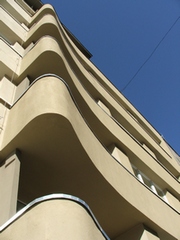 The surrounding hills and coastline will appeal to many – there’s a leisure pier, a cliff-coast, the Reservation Park, two museum ships in the harbour and a 1.5km promenade leading from the marina in the city centre to the beach in Redłowo.
The surrounding hills and coastline will appeal to many – there’s a leisure pier, a cliff-coast, the Reservation Park, two museum ships in the harbour and a 1.5km promenade leading from the marina in the city centre to the beach in Redłowo.
A city of festivals, Gdynia also offers “highs” for views from Kamienna Góra, the observation point near Chwaszczyno, and the observation towers at Góra Donas and Kolibki.
In these days when Poles constitute at least 1% of the UK population, it is particularly apposite that Gdynia will be the home of Poland’s first museum of emigration. Sited in the old Maritime Station building, the museum will tell the story of the Polish diaspora. It’s due to open in 2014/15.
‘Nuff history – time for a quick run-down of places you’ll see in and around Gdynia.
The oldest building you’re likely to see is the C13 church of St Michael the Archangel in Oksywie. After that, it’s the C17 manor in ul Folwarczna, Orłowo.
Plaża Miejska (city beach) is located in the centre, next to Gdynia Marina and Bulwar Nadmorski (Seaside Promenade). Get the No 152 bus to Osada Rybacka (Fishermen Village) in the morning to see the funicular being used to carry catches up the cliff. At ul. Sędzickiego 3 you’ll find the open air Navy museum, Muzeum Marynarki Wojennej, with its collection of marine weapons, helicopters, cannons, torpedoes and fighters. The museum is in the suburb of Kamienna Góra (Stone Mountain) with its famous lookout.
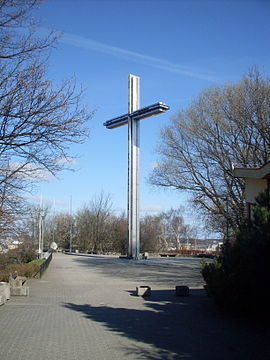 The Tri-city Landscape Park (Trójmiejski park krajobrazowy) borders Gdynia and Gdańsk.
The Tri-city Landscape Park (Trójmiejski park krajobrazowy) borders Gdynia and Gdańsk.
Sopot
Sopot is a health-spa and seaside resort. It is also the third member of the Gdańsk -Gdynia-Sopot tri-city.
While Gdansk has a long history – largely a German one – as a port and trading city and Gdynia is a port and city of the first half of C20, the spa at Sopot has been popular with the citizens of Gdańsk since C16 (the village dates back to C13).
Nowadays – well, it’s a beautiful spot on a beautiful coast, and deservedly popular with Poles and internationally.
Sopot Pier – built as a pleasure pier and as a mooring point for cruise boats, first opened in 1827. At 511.5m, the pier is the longest wooden pier in Europe.
The pier often appears as the backdrop to the TV weather forecast – probably on the “if seaweed is wet, forecast rain” basis!
St George’s church
Downtown Sopot
Sopot has some REALLY nice hotels!
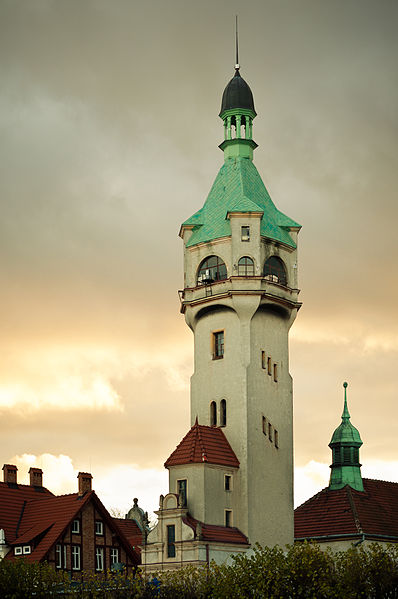 The lighthouse is pretty spectacular …
The lighthouse is pretty spectacular …
… as is the beach
The Krzywy Domek, or Crooked House, is a part of the Rezydent shopping centre.
Just a thought – before we move on, you might like to see how the land lies – the area of the tri-city lies on the Bay of Gdansk, which runs from Puck to the Kaliningrad Oblast – a “detached” part of Russia. The Bay saw a bombardment by the German Navy, during the 19939 Inviasion of Poland.
Now, tongue firmly in cheek, you see Puck? And the ligttle elomgated sperm thing pointing into the Bay? Well, that’s the Hel Peninsula – our fifth and final feature for this visit to the Baltic Coast of Poland.
Hel
If it’s Le Touquet-Paris-Plage, if Brighton is London-by-the-sea and if Sopot is where the people from the tri-city go to get over their excesses, then Hel is where they go to play. Hel town, and the Hel Peninsula, is a 34km long beach and watersports hotspot.
Hel is only 100m wide in places – it’s widest at the tip.
The Fisheries Museum in Hel
You can drive (ok, let’s get it out of the way, take the highway to Hel), take the bus or train, or you can get to Hel by boat. There you’ll find three museums – Fisheries, Coastal Defence and Polish Navy – but what brings a lot of holiday-makers to Hel is the Sealarium on ul Morska.
Operated by Gdansk University, there are performances but the Sealarium’s goal is to breed and grow grey seals and set them free to replace the decimated natural population.
Visits to the Sealarium:
Open daily, no need to book, 06:30 to 21:00
No animals may be taken into the Sealarium
Tickets 5zl or 6zl with admission to the exhibition of “Mammals of our sea”
The seals are fed throughout the year at 11:00 and 14:00. In July and August there is an additional feeding time at 17:00
But the reason Hel is so popular is the beaches and water sports and its small towns.
Hel Town
Hel Lighthouse
The beach and boardwalk at Jurata
The beach at Jastarnia
The church at Kuźnica
Władysławowo has a fishing harbour …
… but it’s not too built up
Otherwise, it’s down to you and your imagination
Or learn to windsurf or kitesurf on Hel
Scroll down to Fortress Hel
Got to Hel! (OK, sorry) by train or by boat – in fact, there are several ferries running services between Gdansk, Sopot, Gdynia and Hel.
Websites:
Read about the work of Hel Marine Station (the Sealarium) in English on the official website http://fokarium.pl/info/helmarinestation.htm
Hel’s Surf and Kite School http://surftofly.com/
Fortress Hel
From the time Poland regained its independence after 1918 until 1999, the Polish and German military ran bases on the Hel Peninsula.
Works began in 1920, with the construction of a strategic railway line, telegraph line and road. In 1931 work began on a naval base and the tip of the peninsula was placed under the control of the military. Four 152mm Bofors Guns were mounted in October 1935. The Hel Fortified Area was signed into existence on 21 August 1936 (though equipment had been bought earlier, so work began immediately) .
An underground power plant was built 1.5km from the naval base. Shelters for ammunition, mines and torpedoes to be stored were erected in the forests. An underground petrol storage reservoir was built, connected by pipeline to the port.
The Luftwaffe attacked Hel in 1 September 1939 – the day Germany invaded Poland. The German Army cut the Danzig Corridor in the following week, and on 9 September attacked the peninsular. The Polish forces on Hel held out until 2 October, making Hel the last piece of Poland to surrender – Independent Operational Group Polesie (Samodzielna Grupa Operacyjna Polesie, SGO Polesie) was the last element of the Polish Army to surrender in the Invasion, on 6 October 1939, following the four-day Battle of Kock.
The monument to the defenders of Hel
Little remains of the naval base
The Hel Fortified Area was decommissioned in 1999, though some areas remain restricted. Various sites can be visited, including those under the care of the Museum of Coastal Defence.
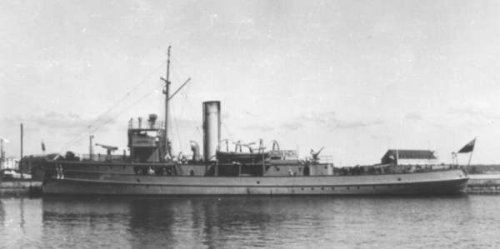 Generał Haller was sunk on 6.9.1939 at Hel naval base by German aircraft.
Generał Haller was sunk on 6.9.1939 at Hel naval base by German aircraft.
